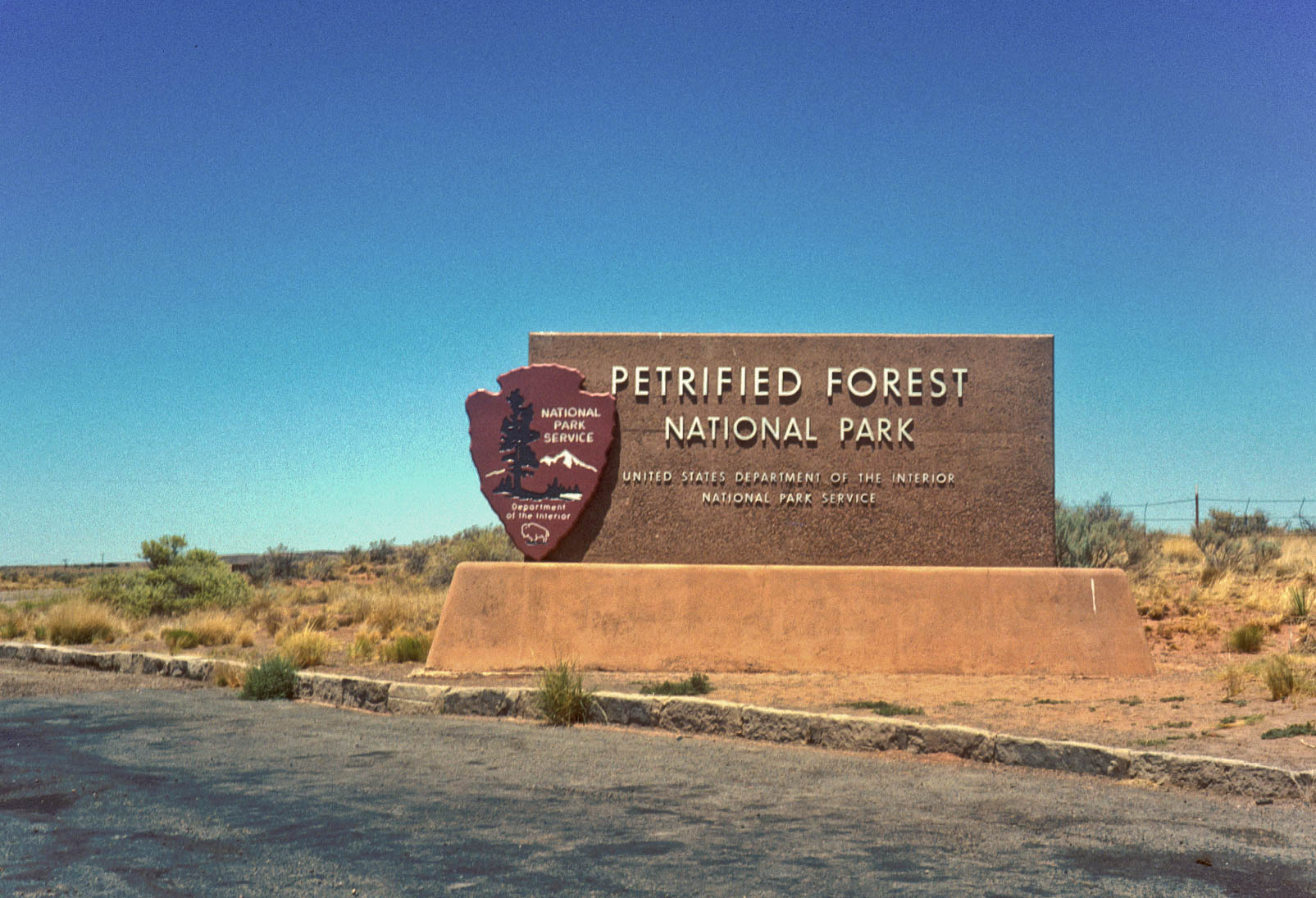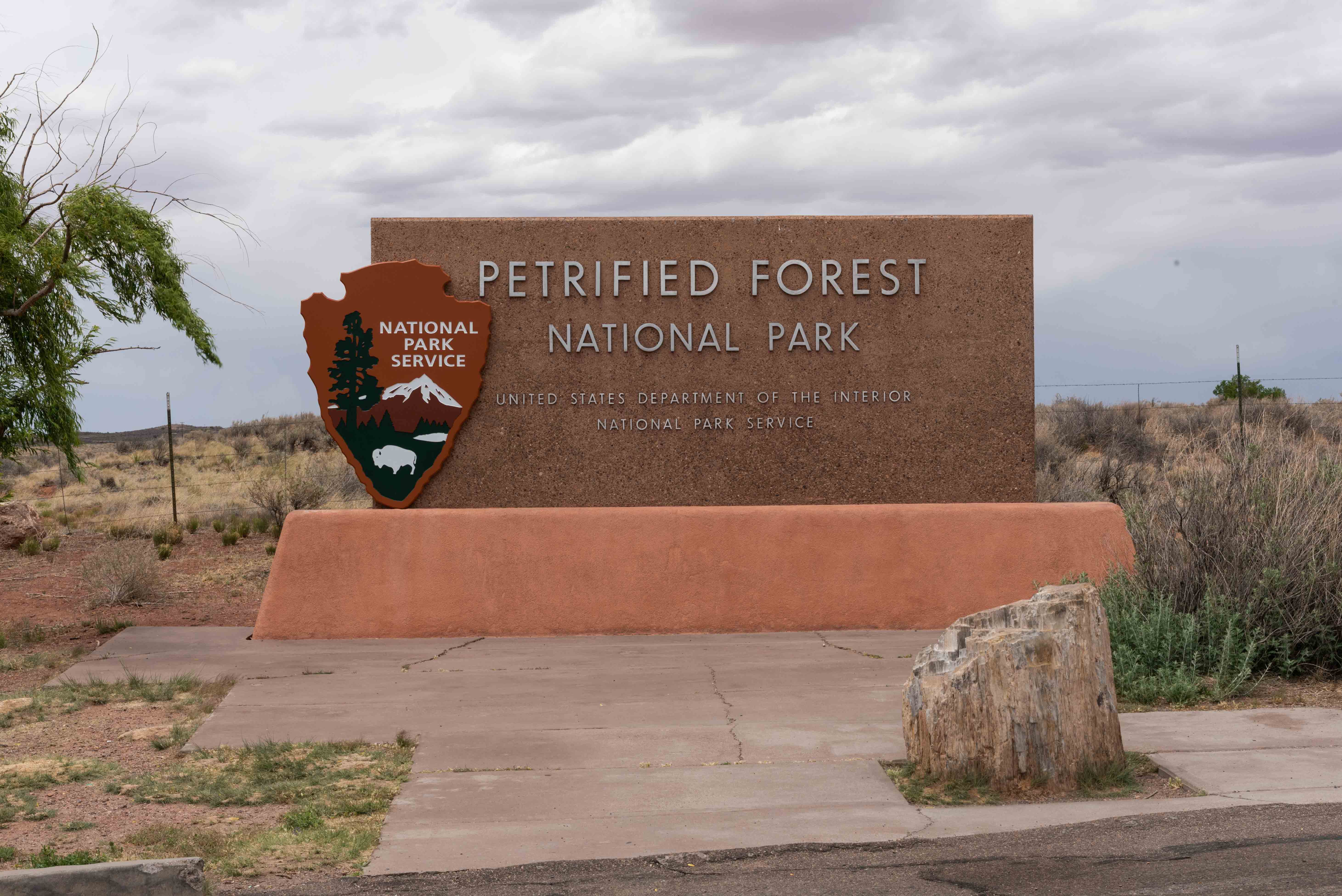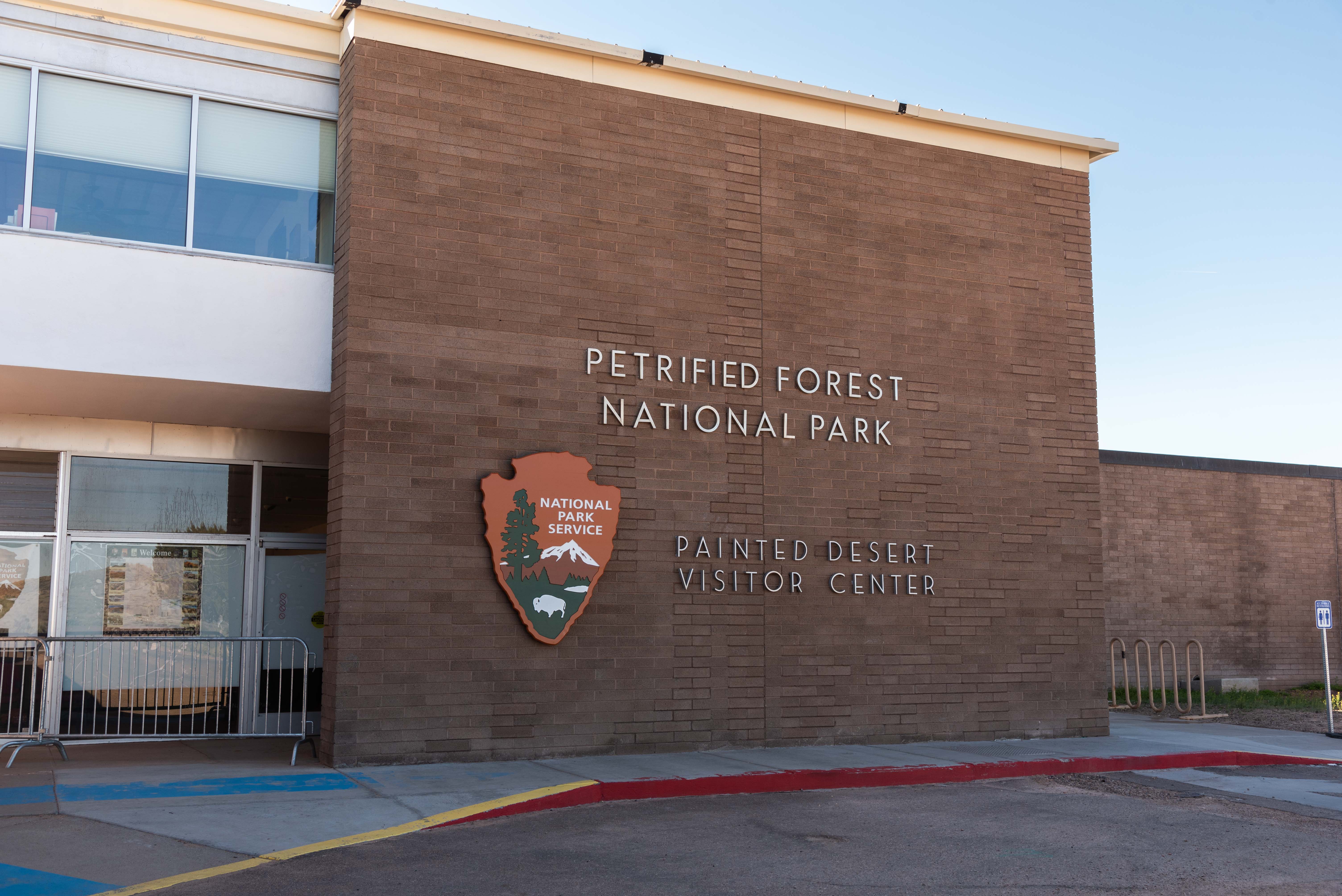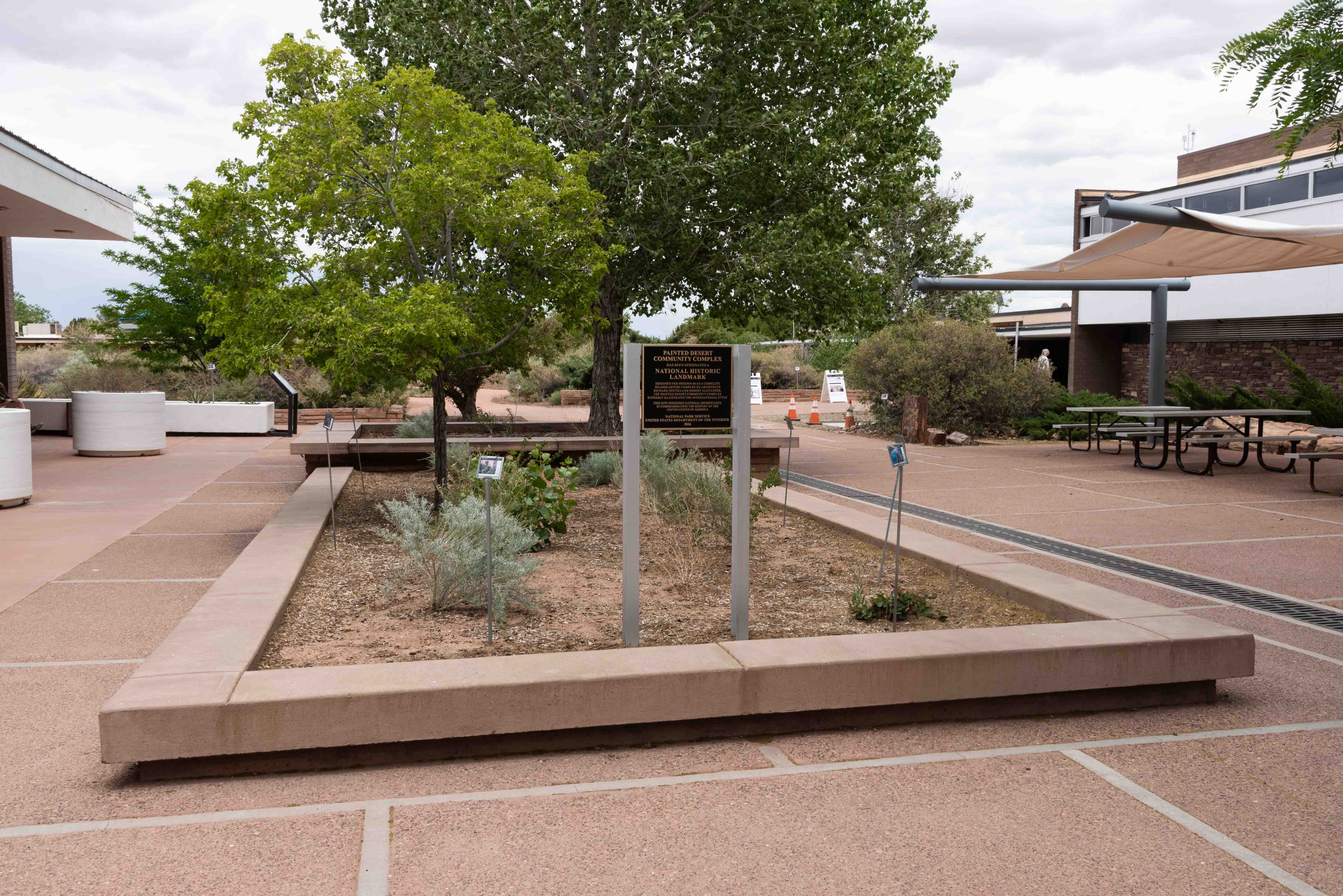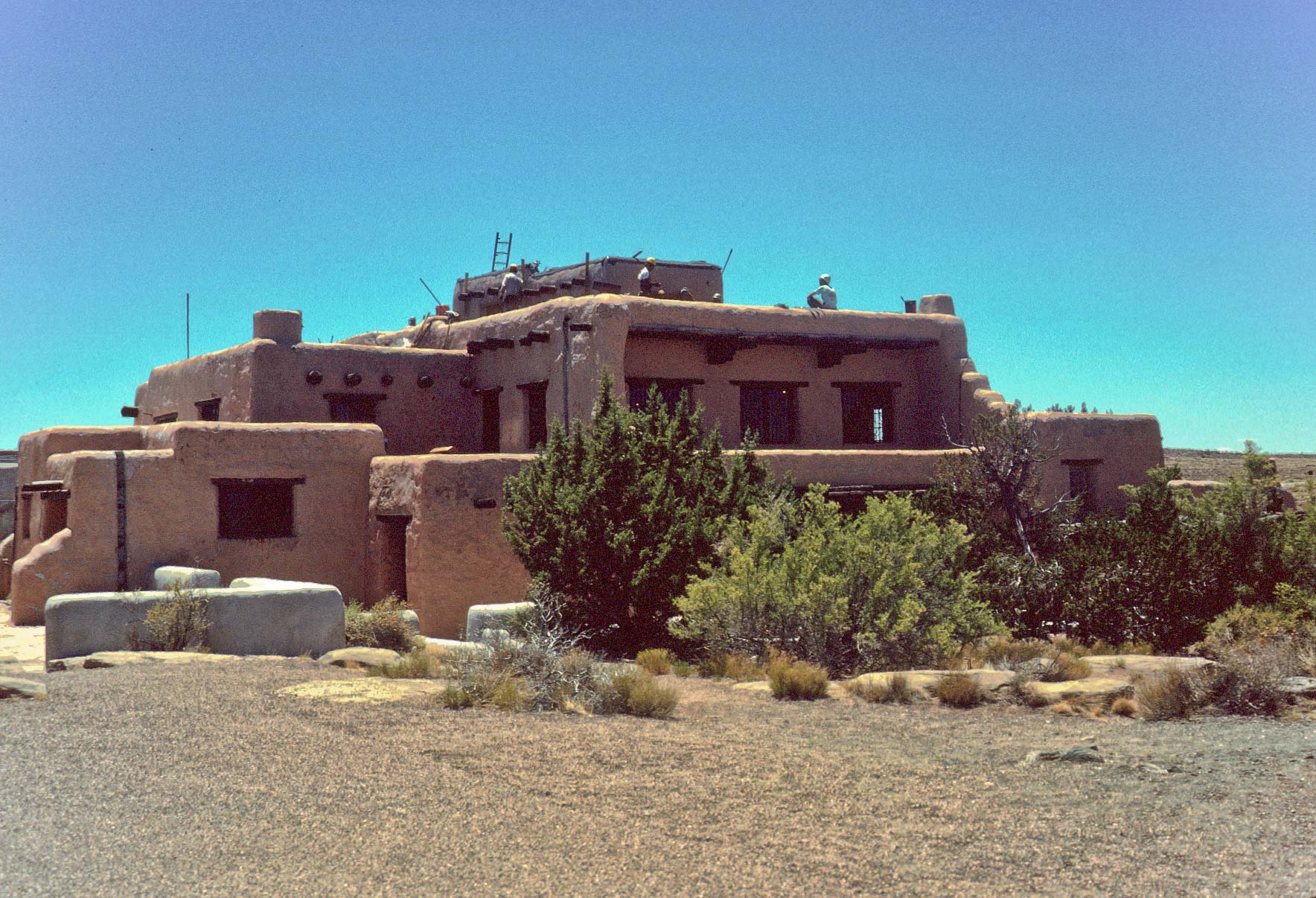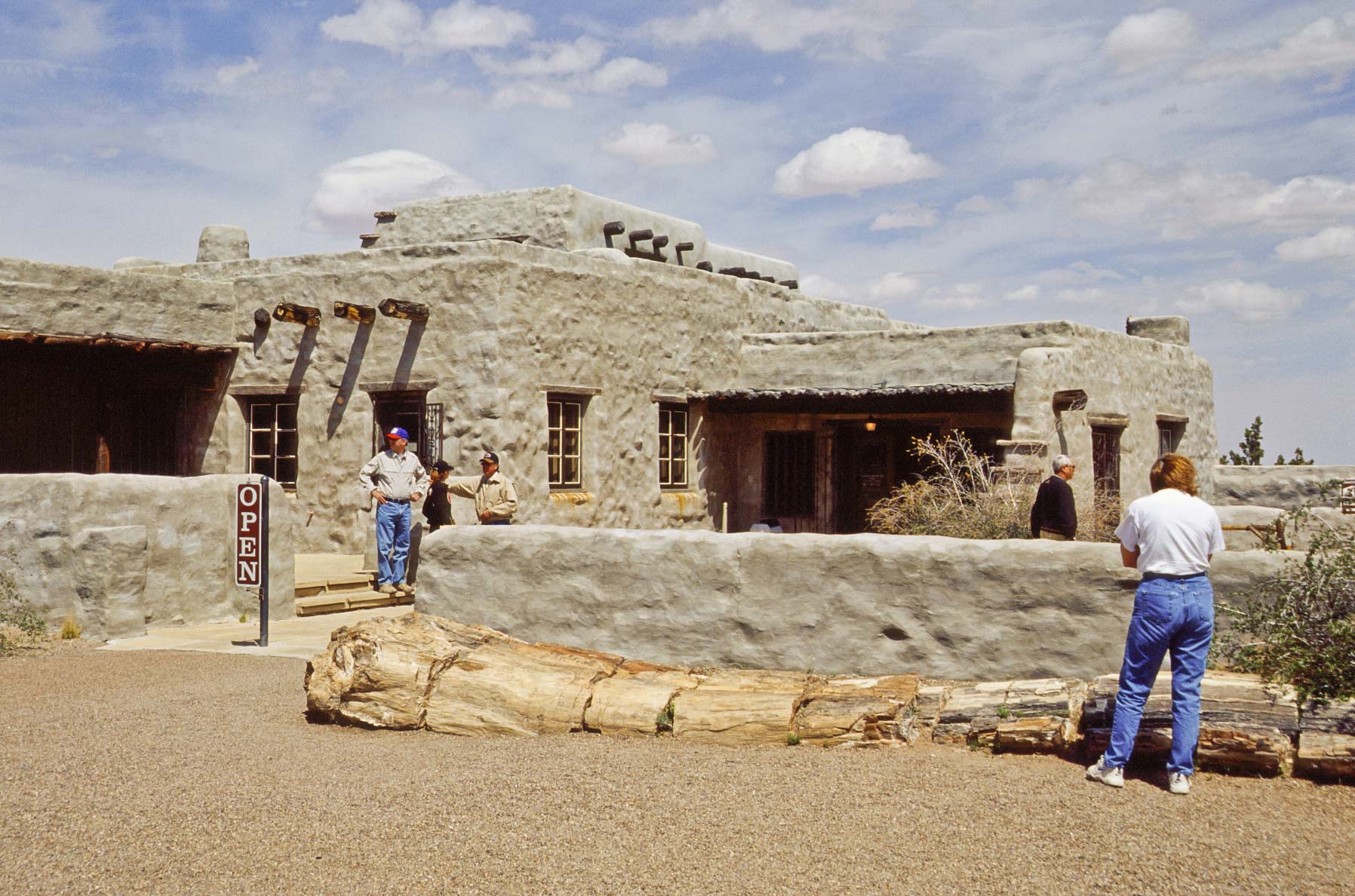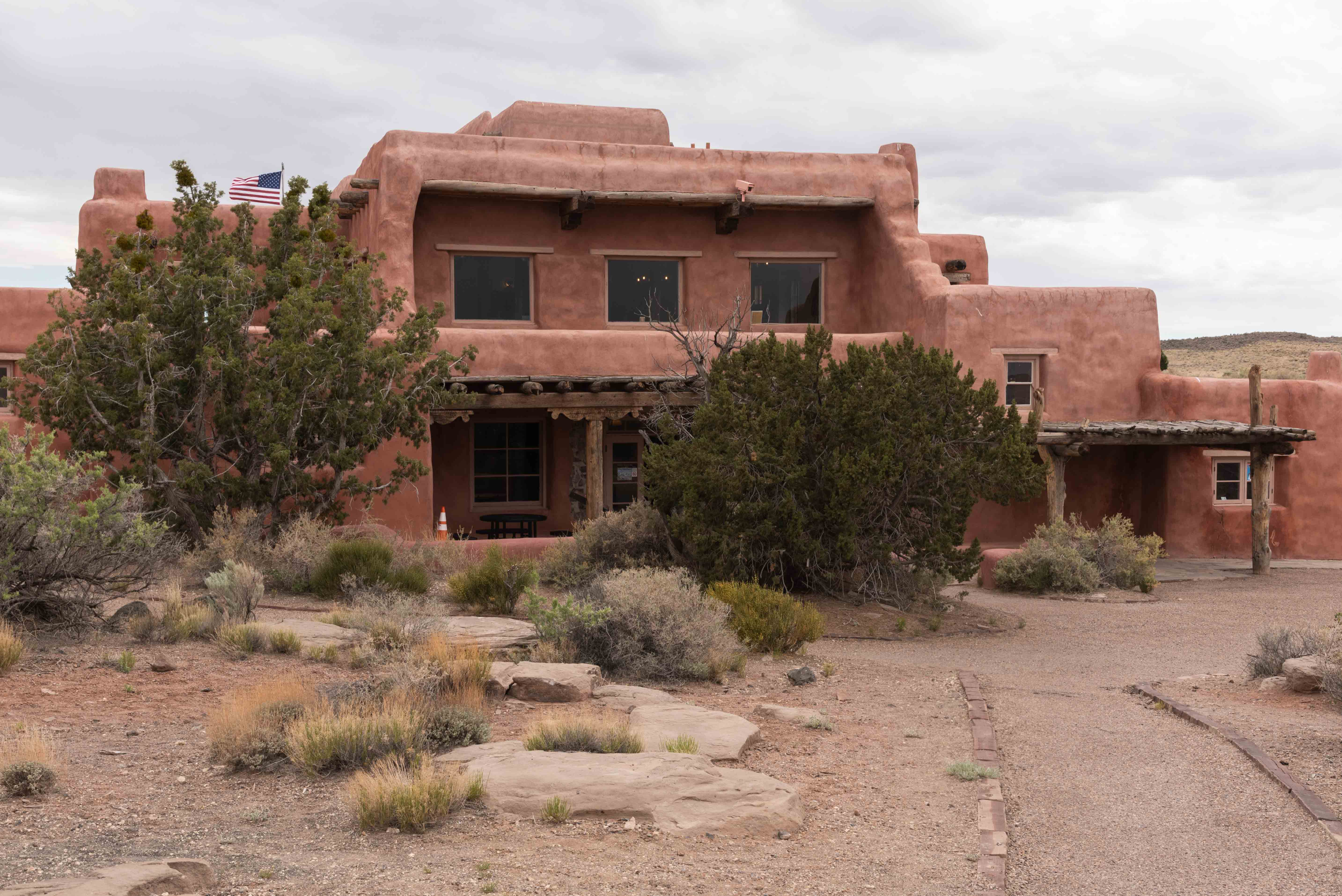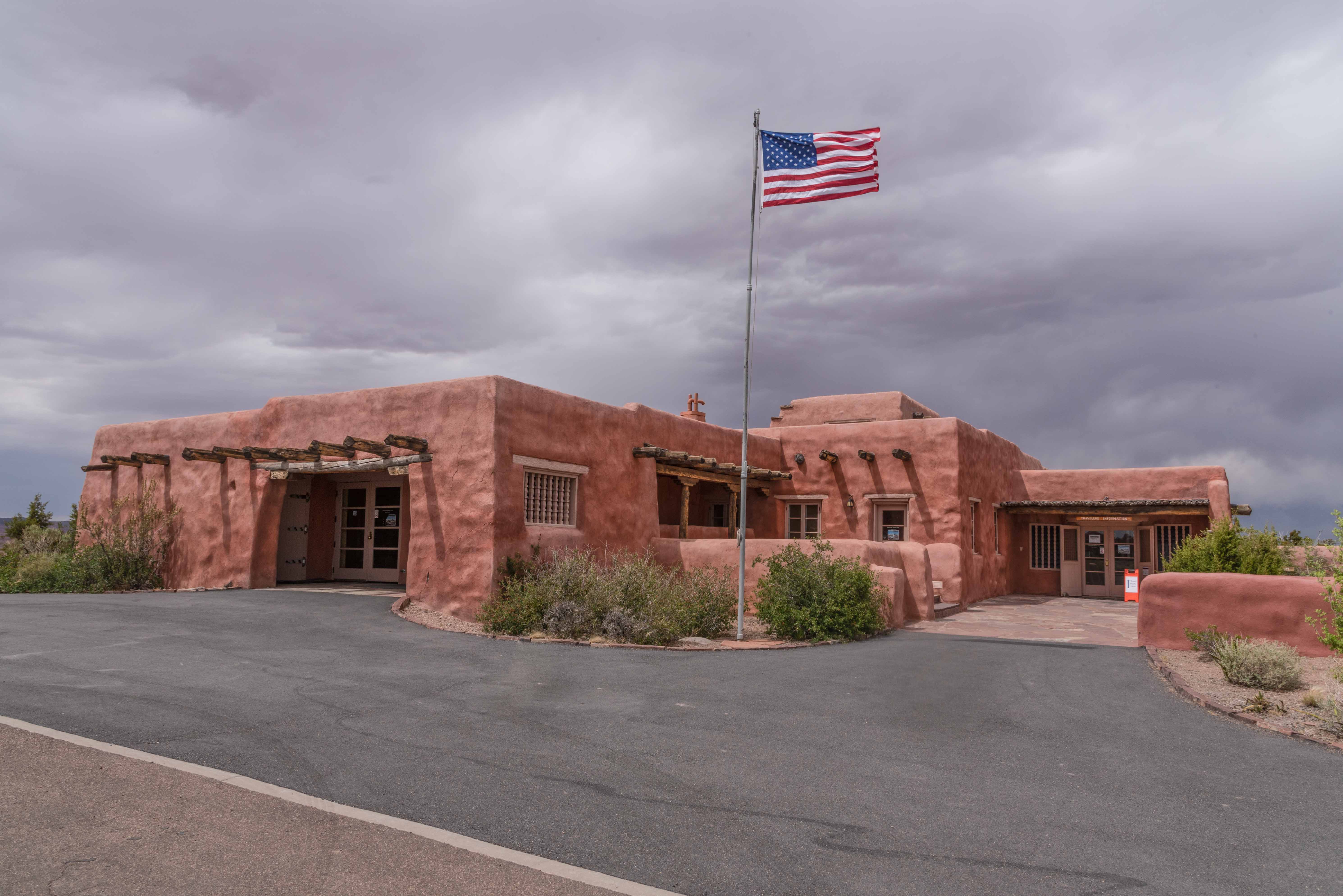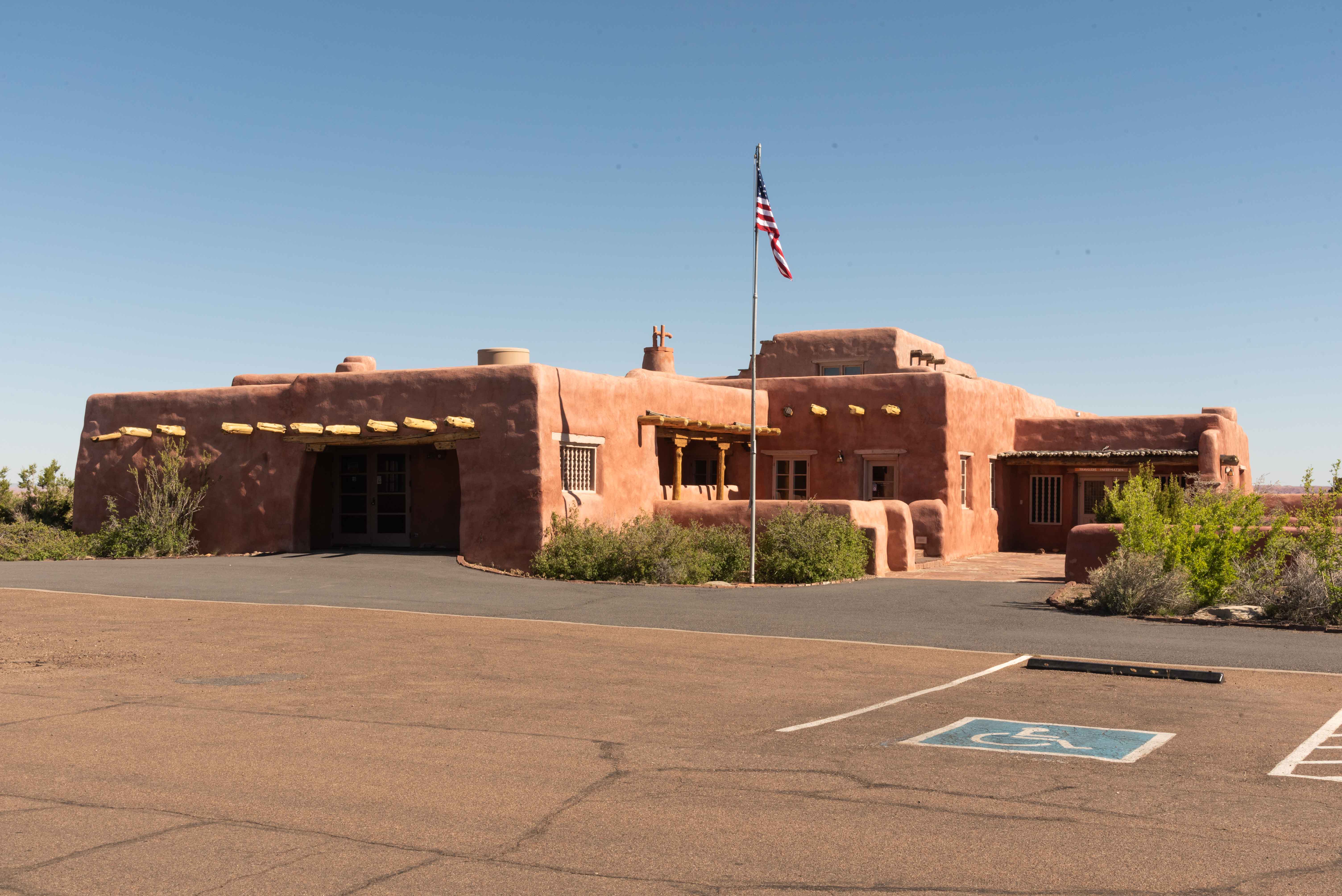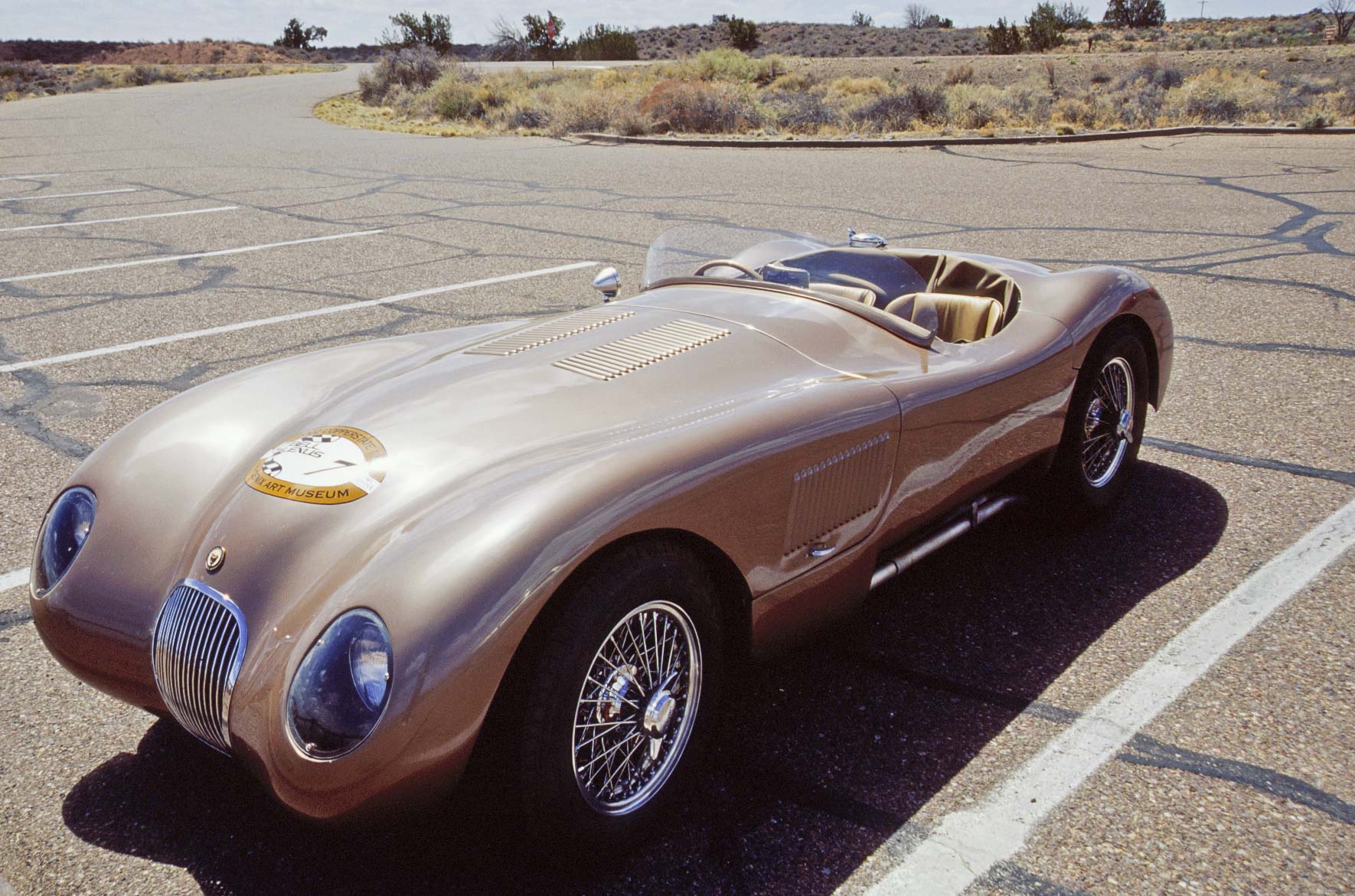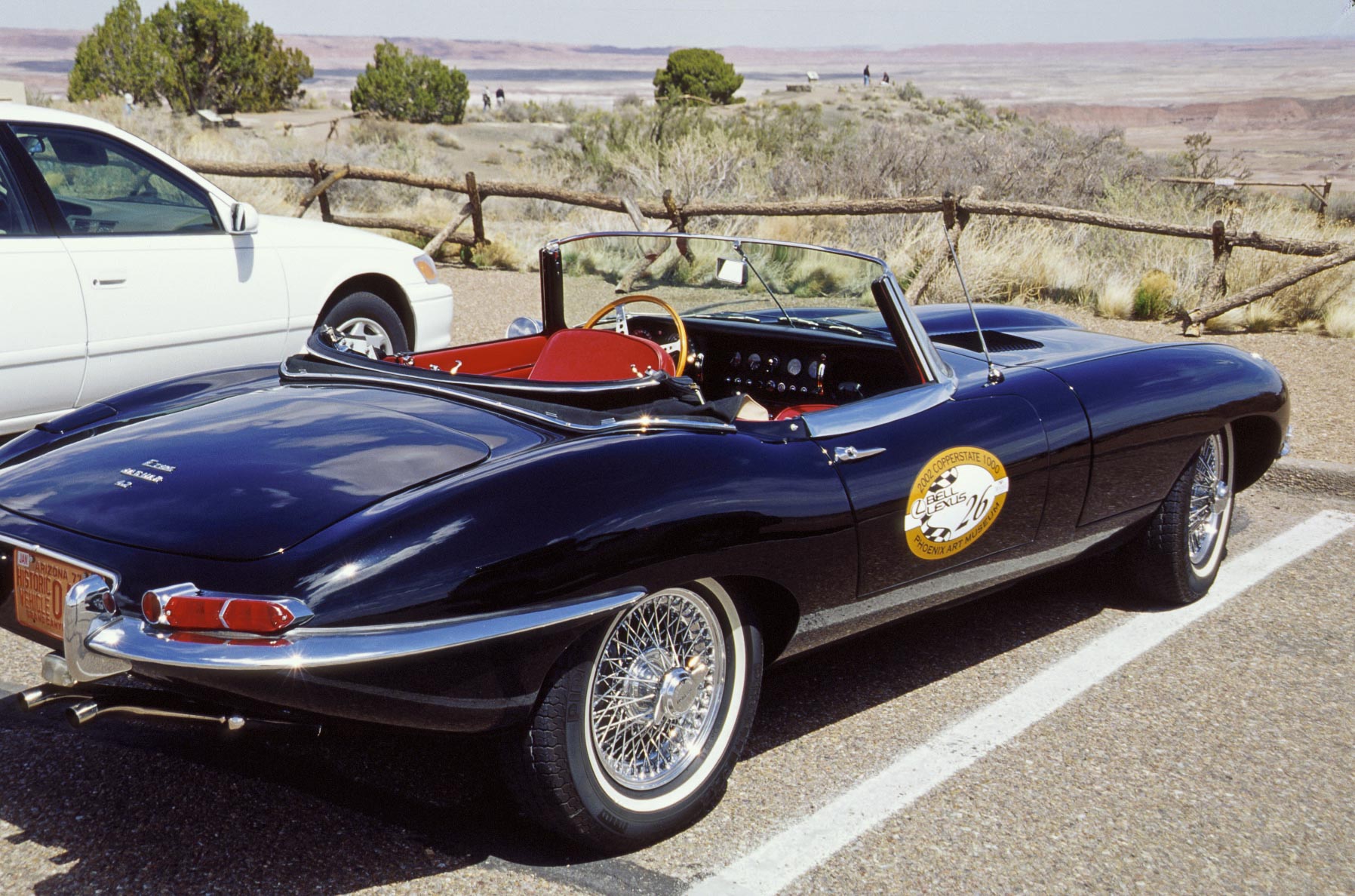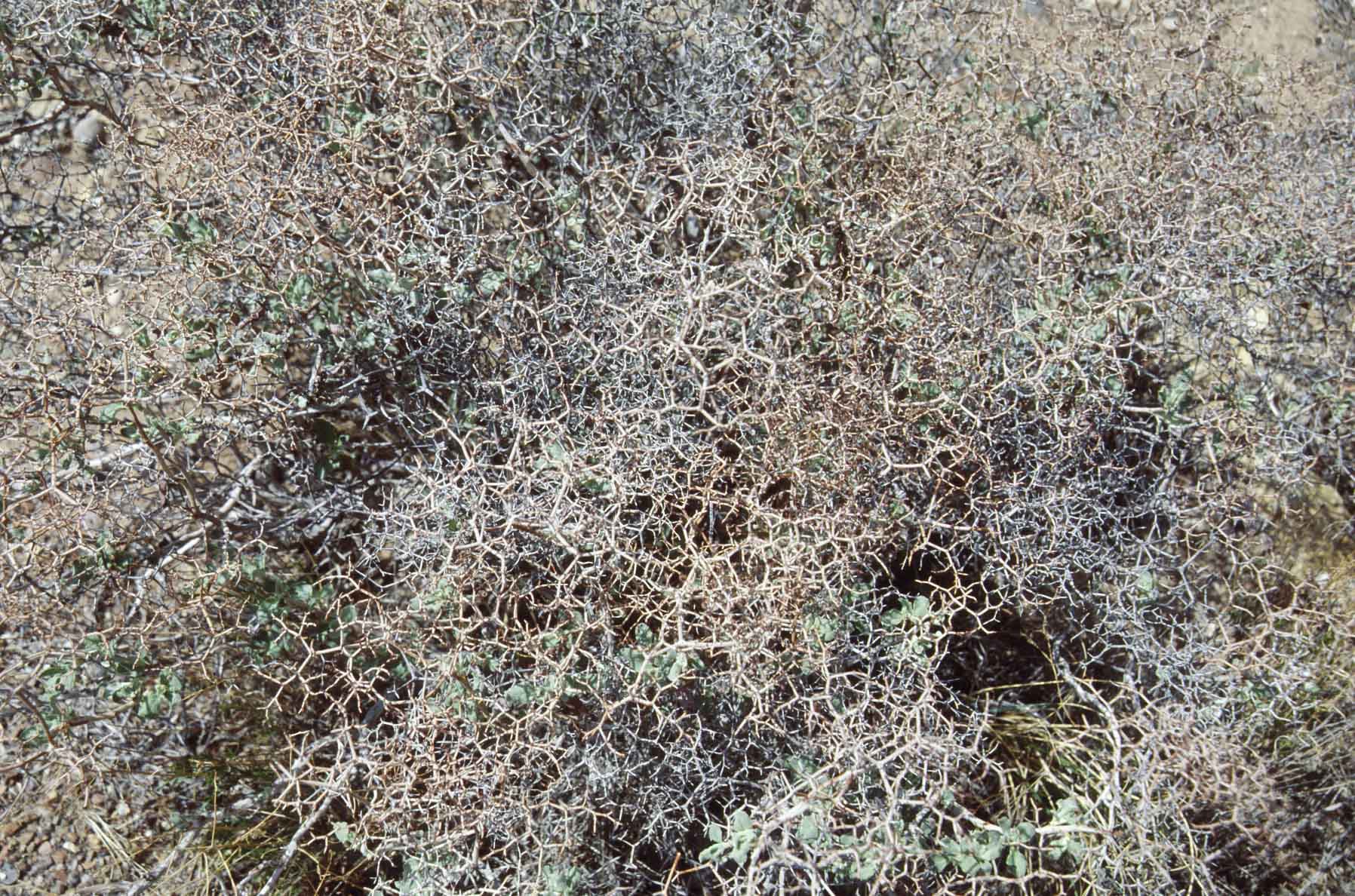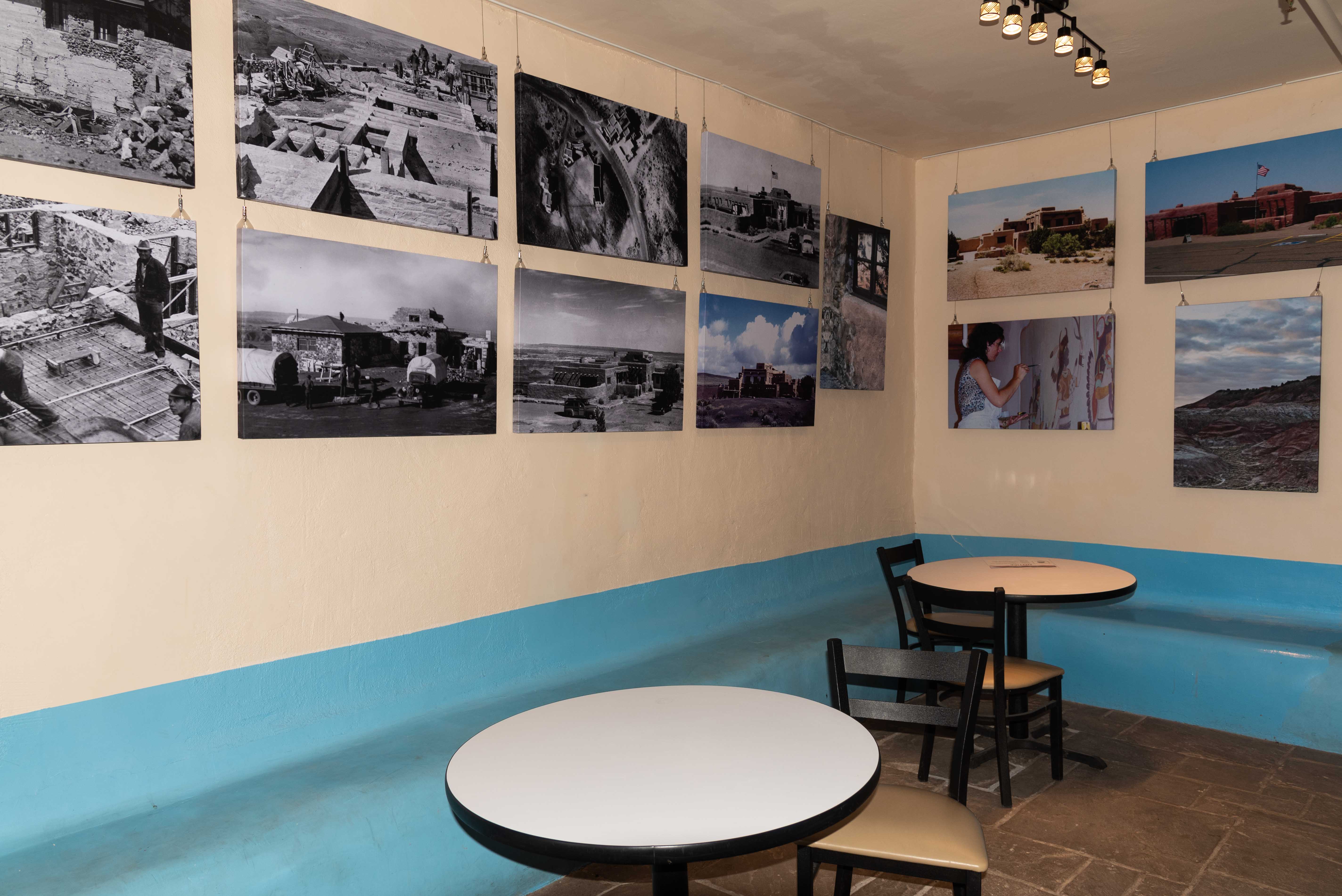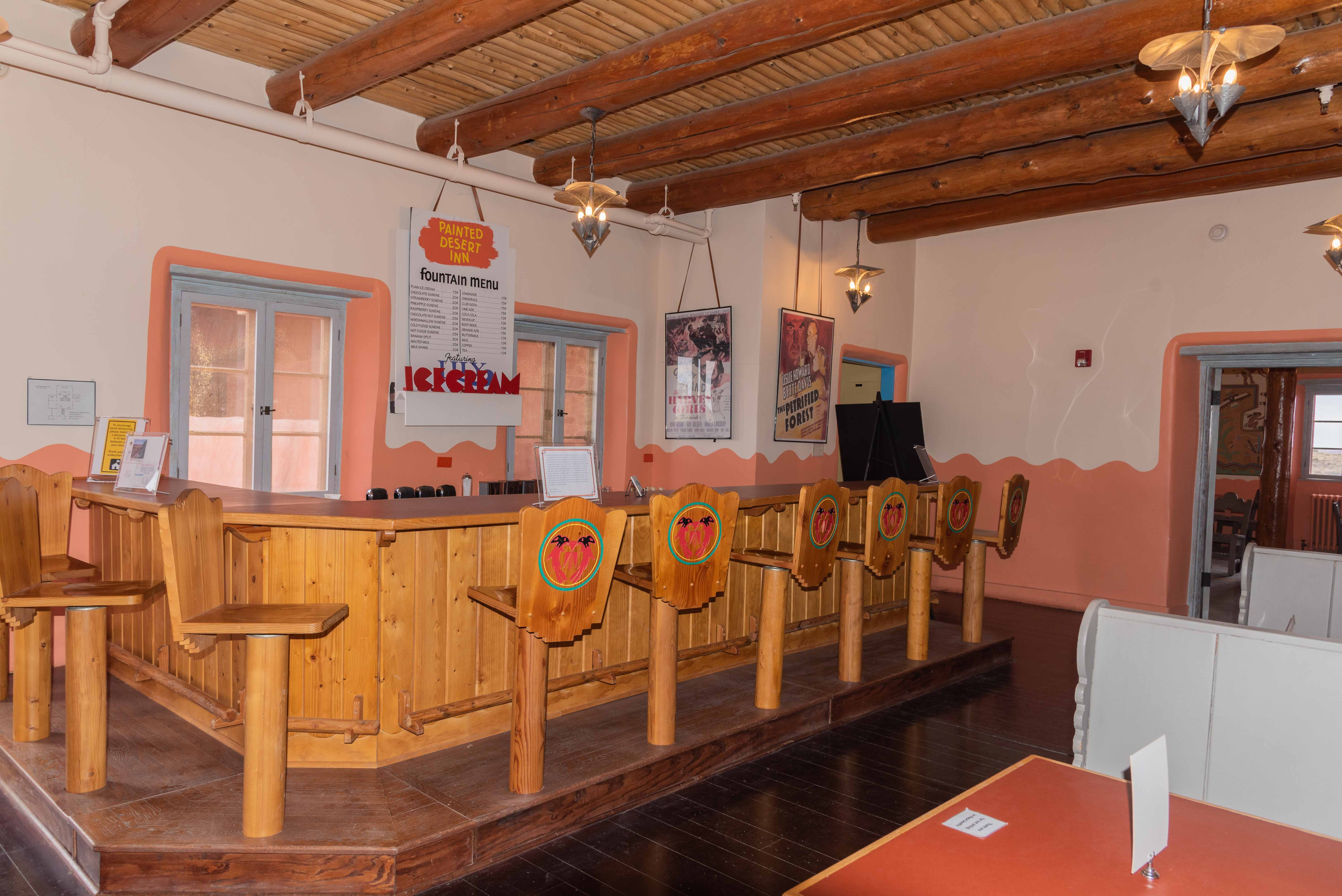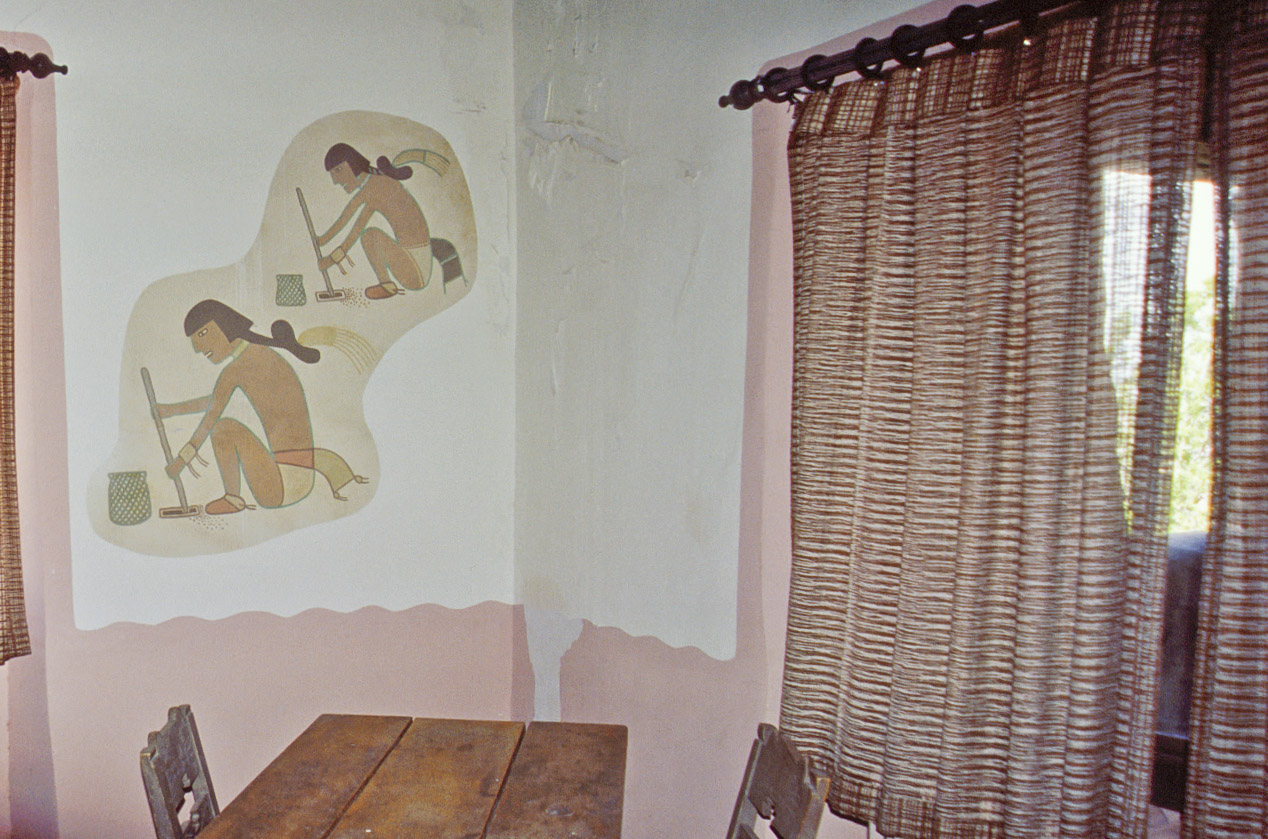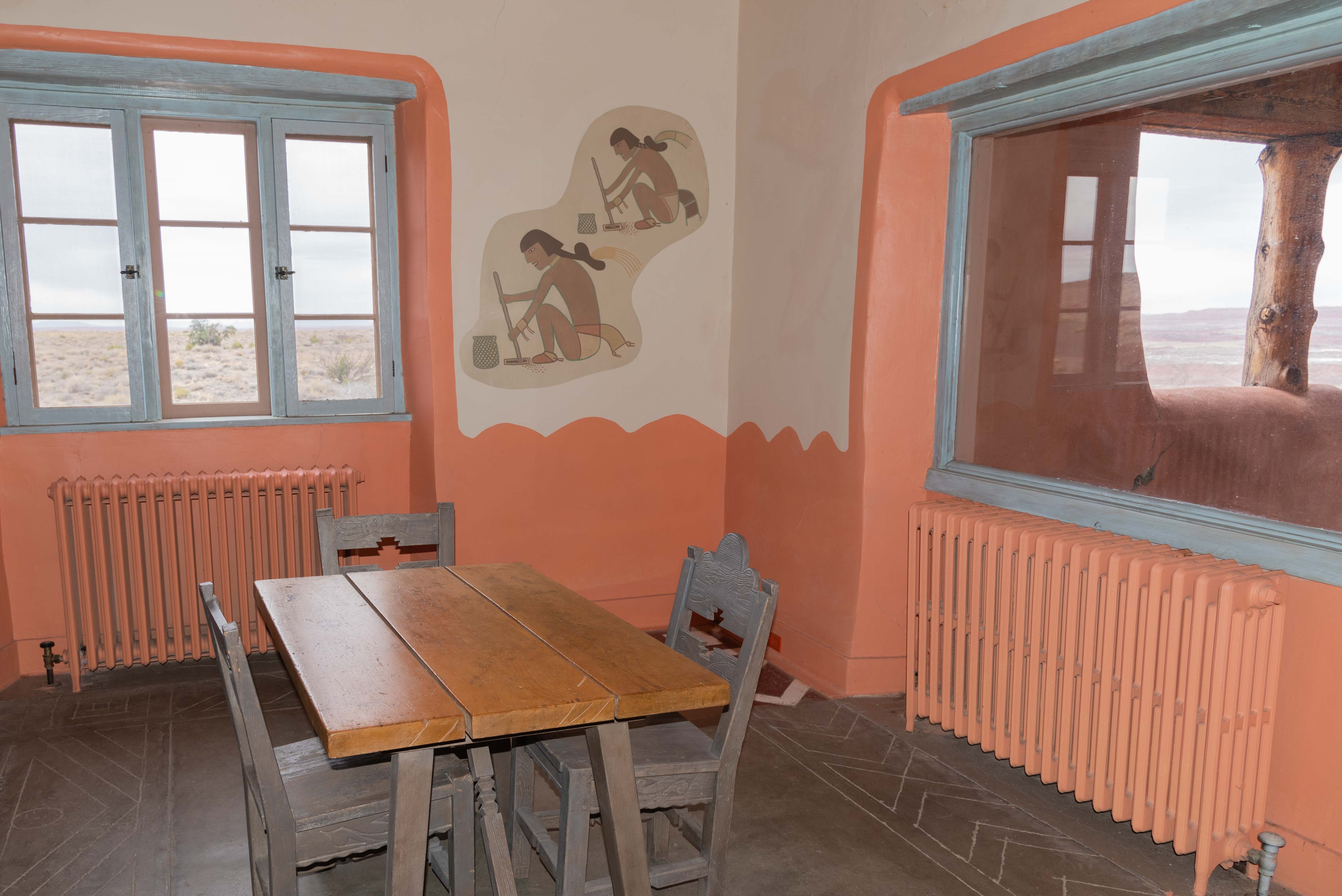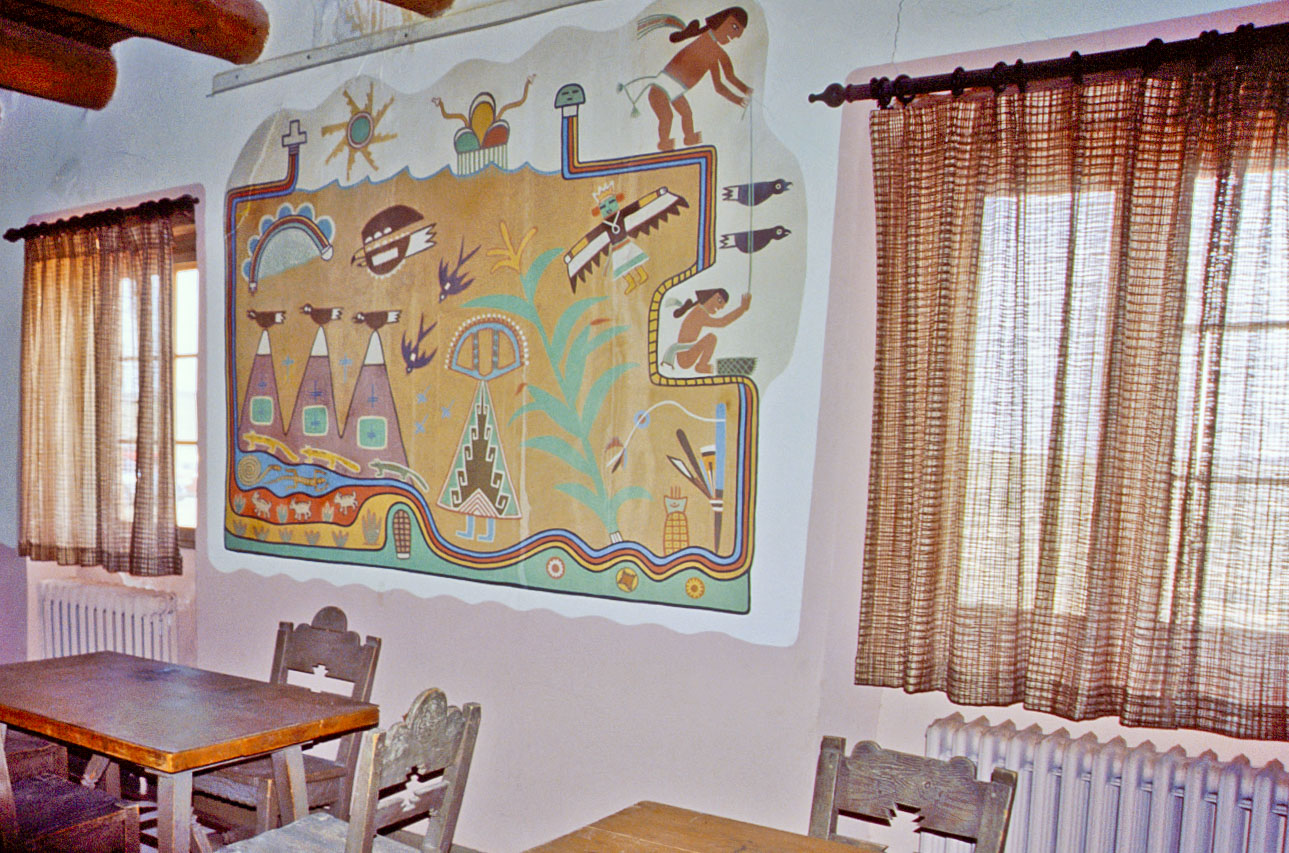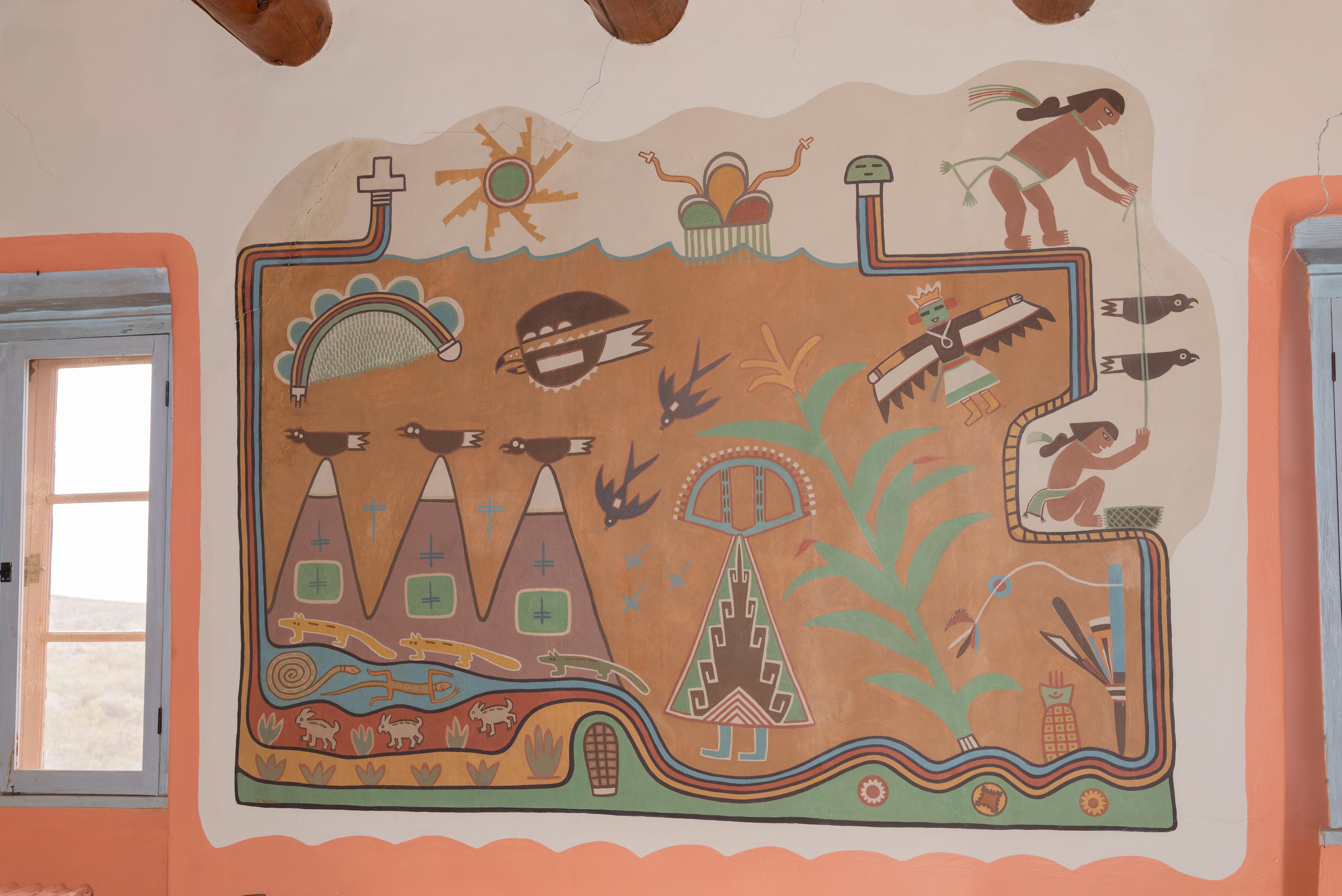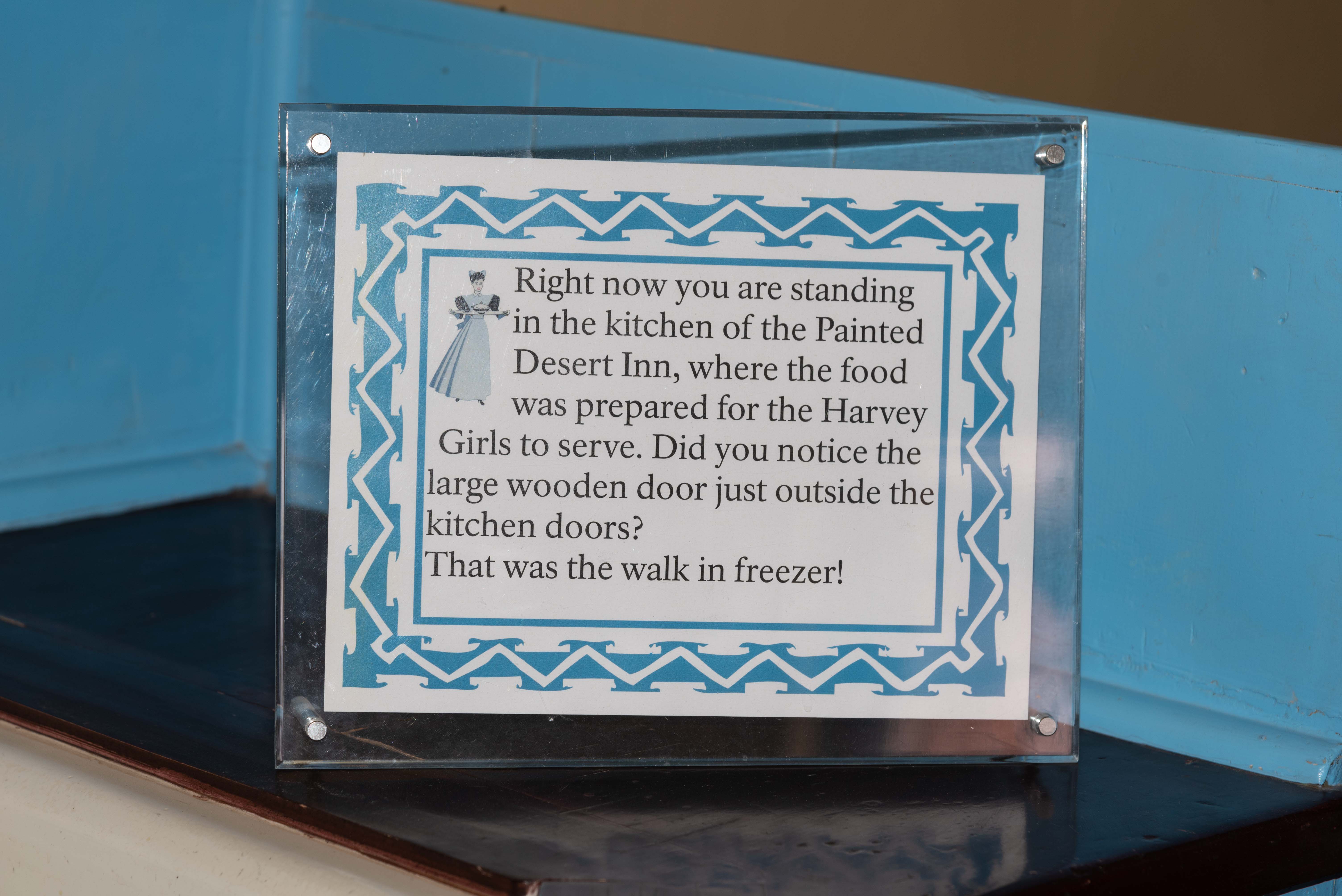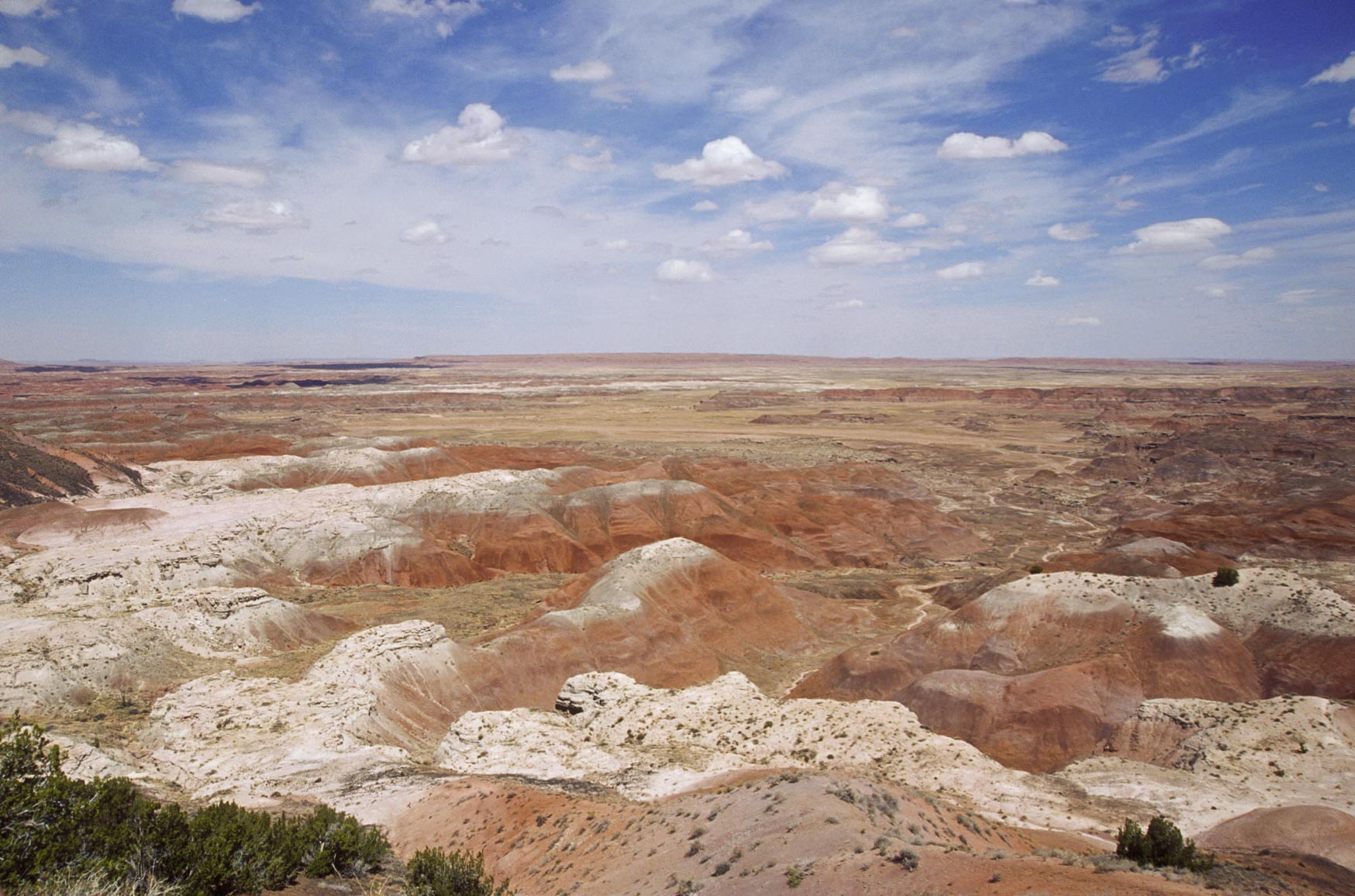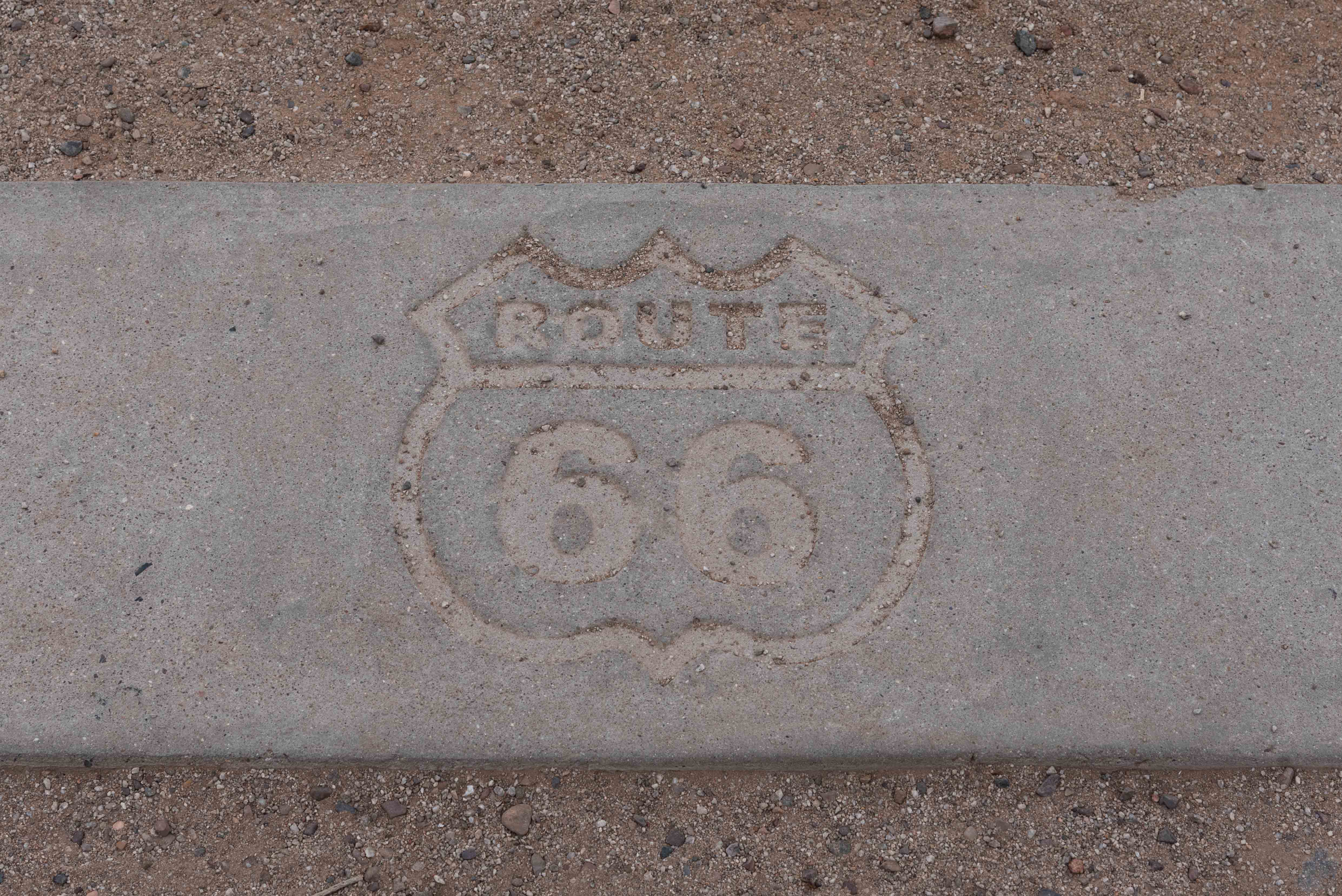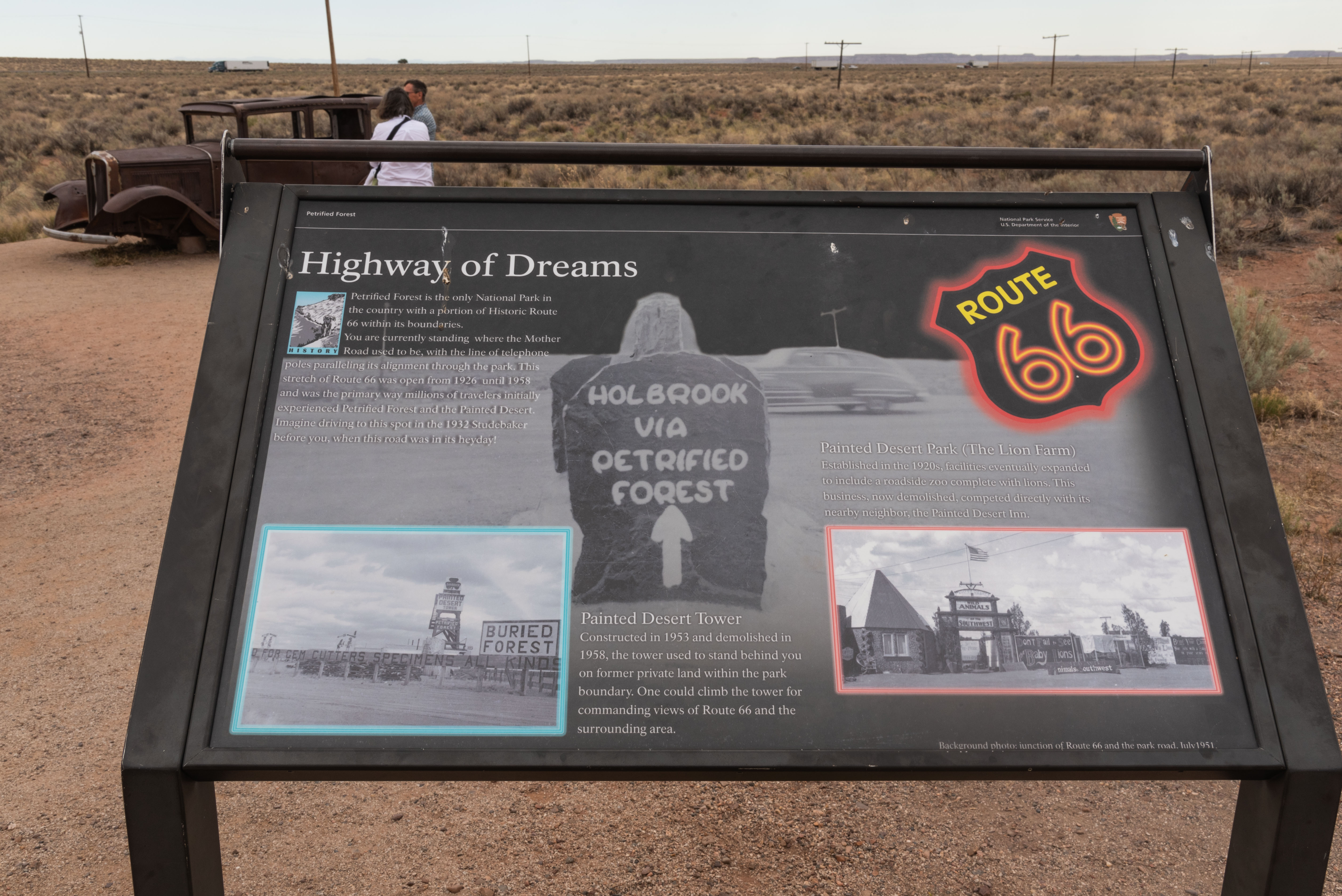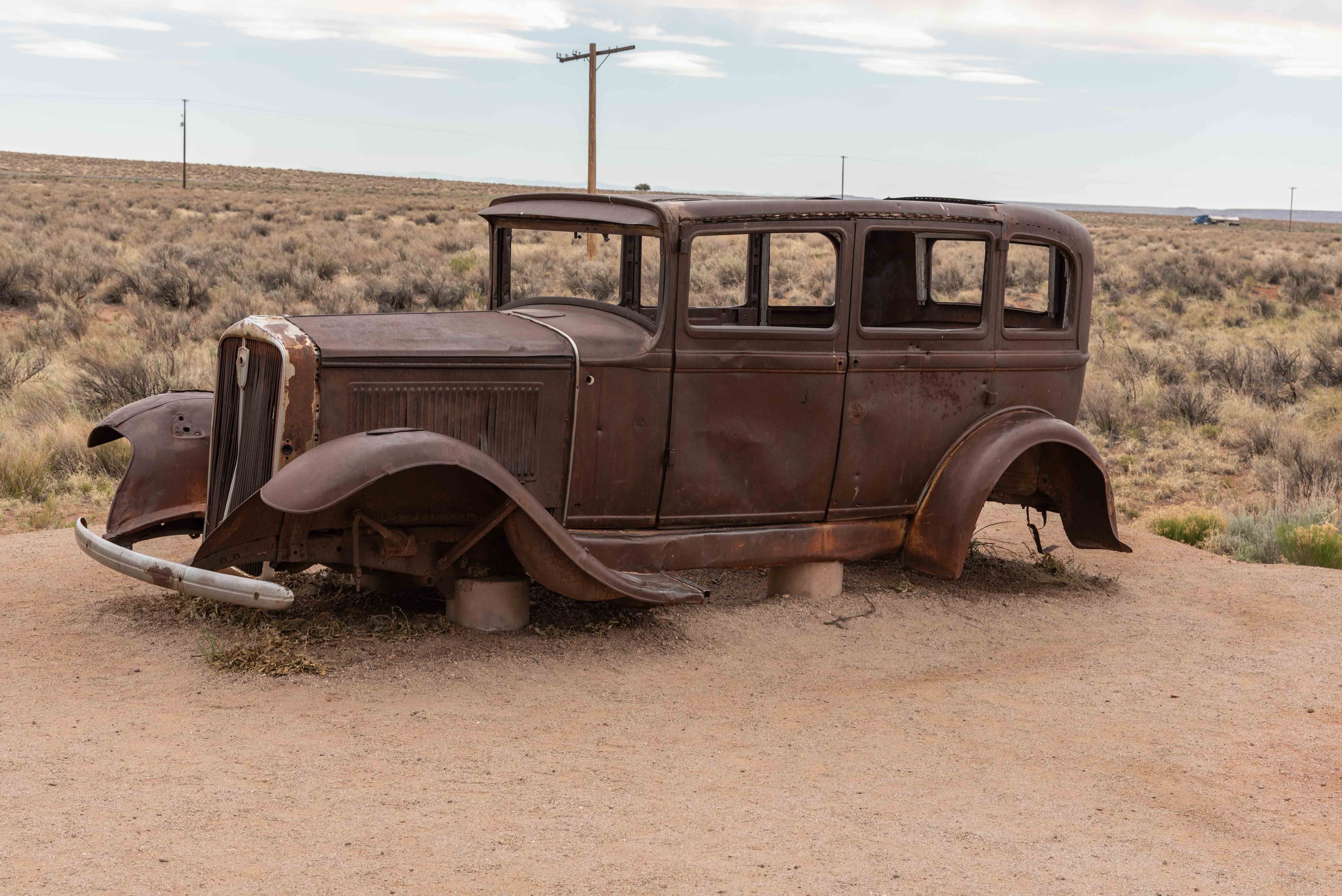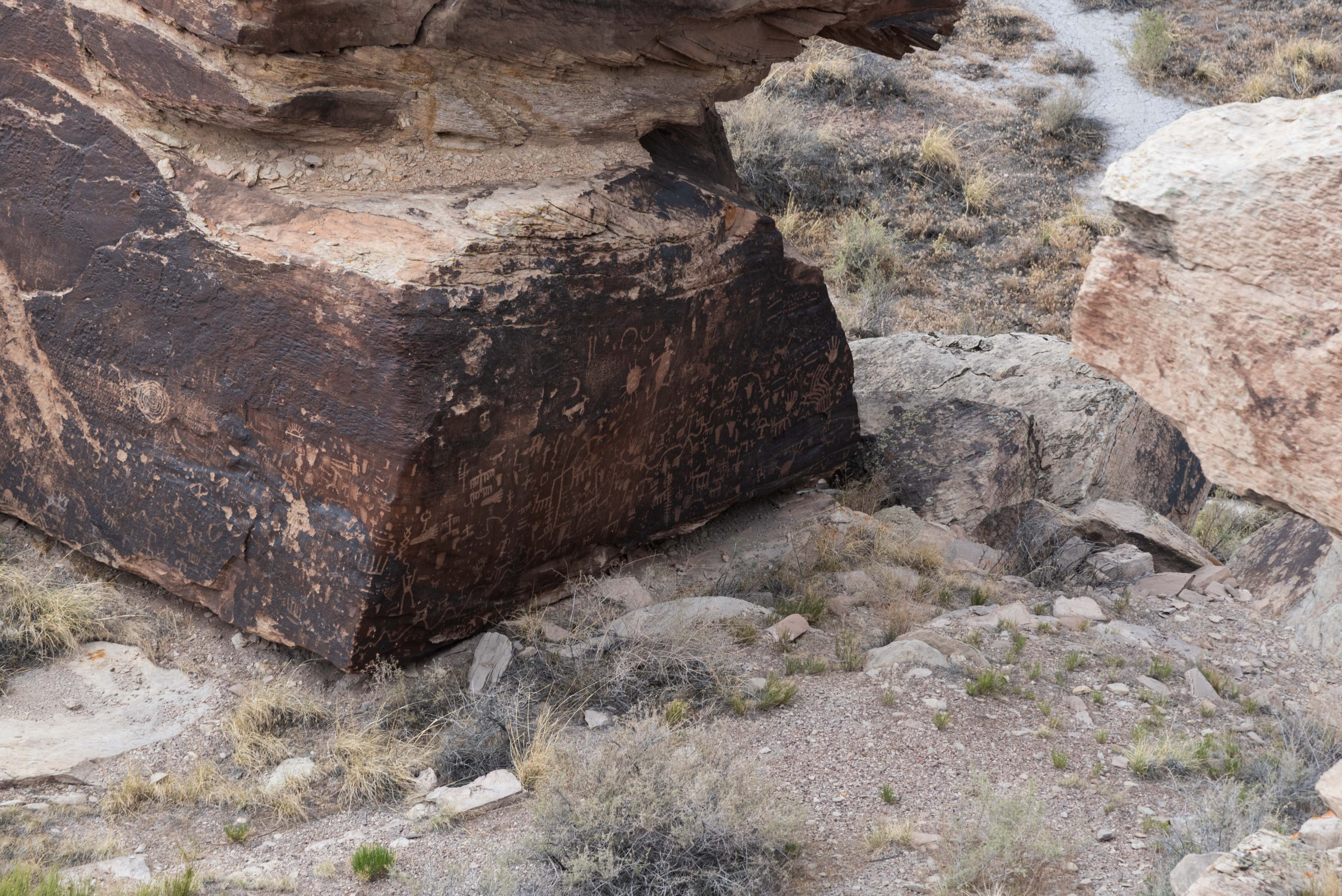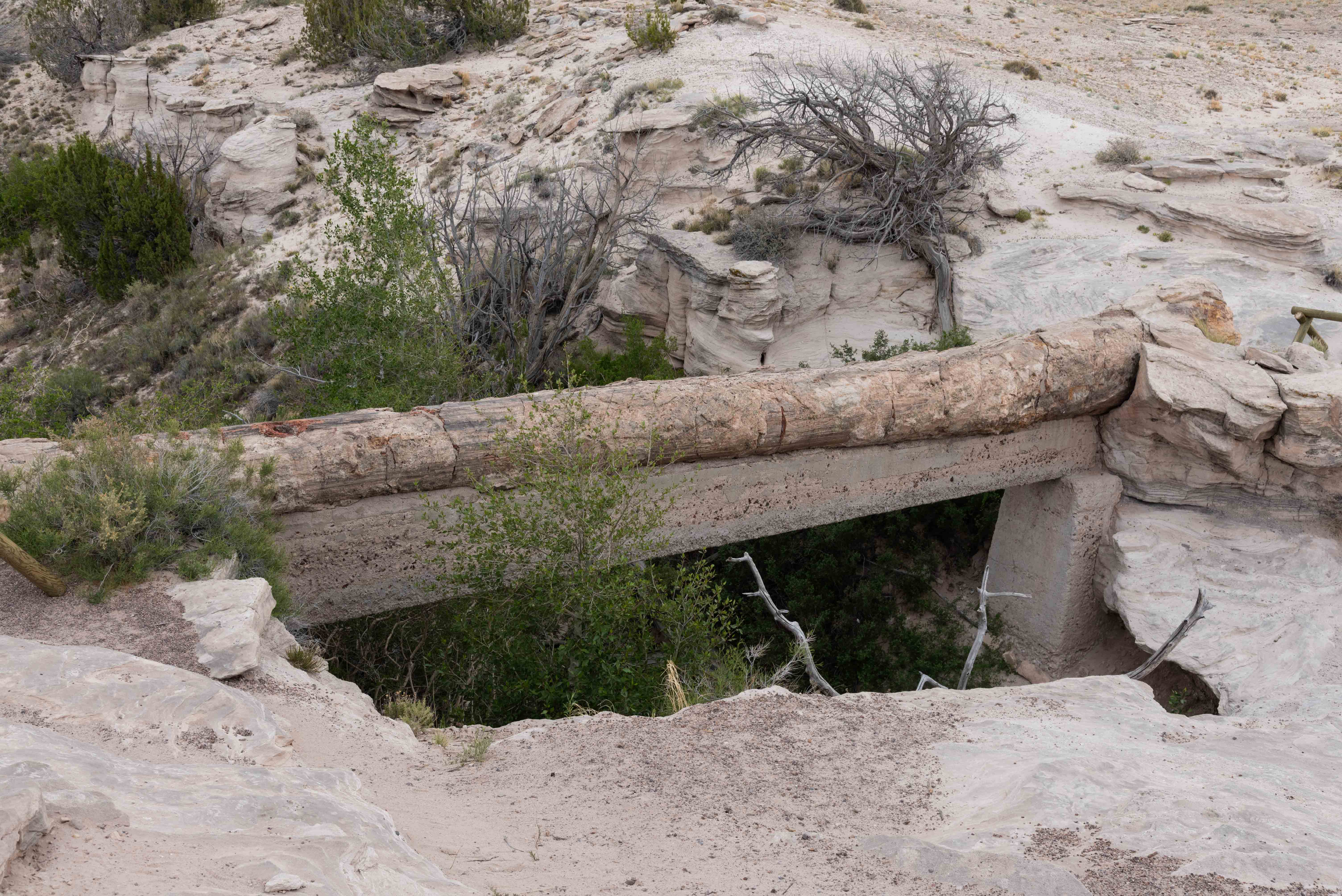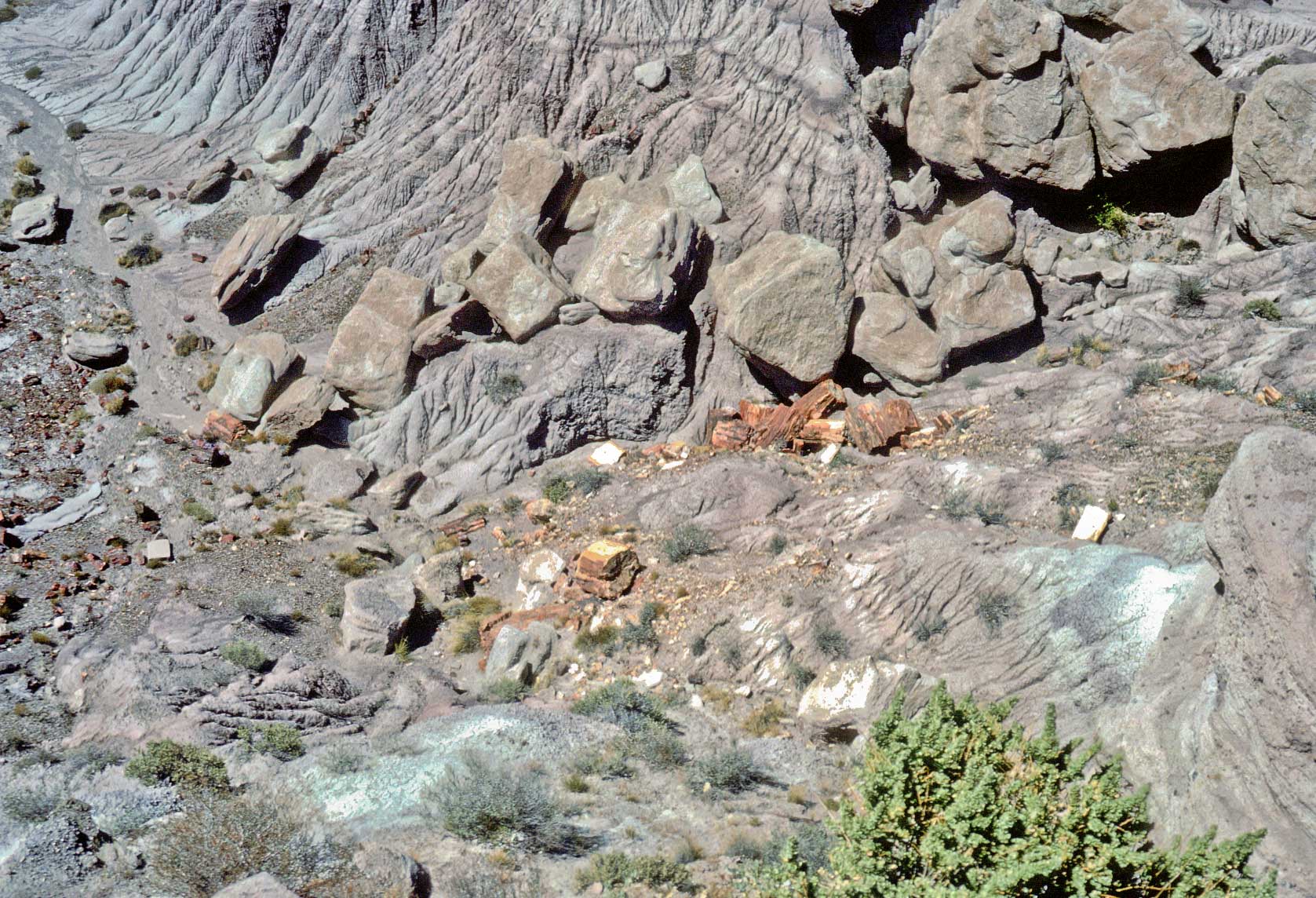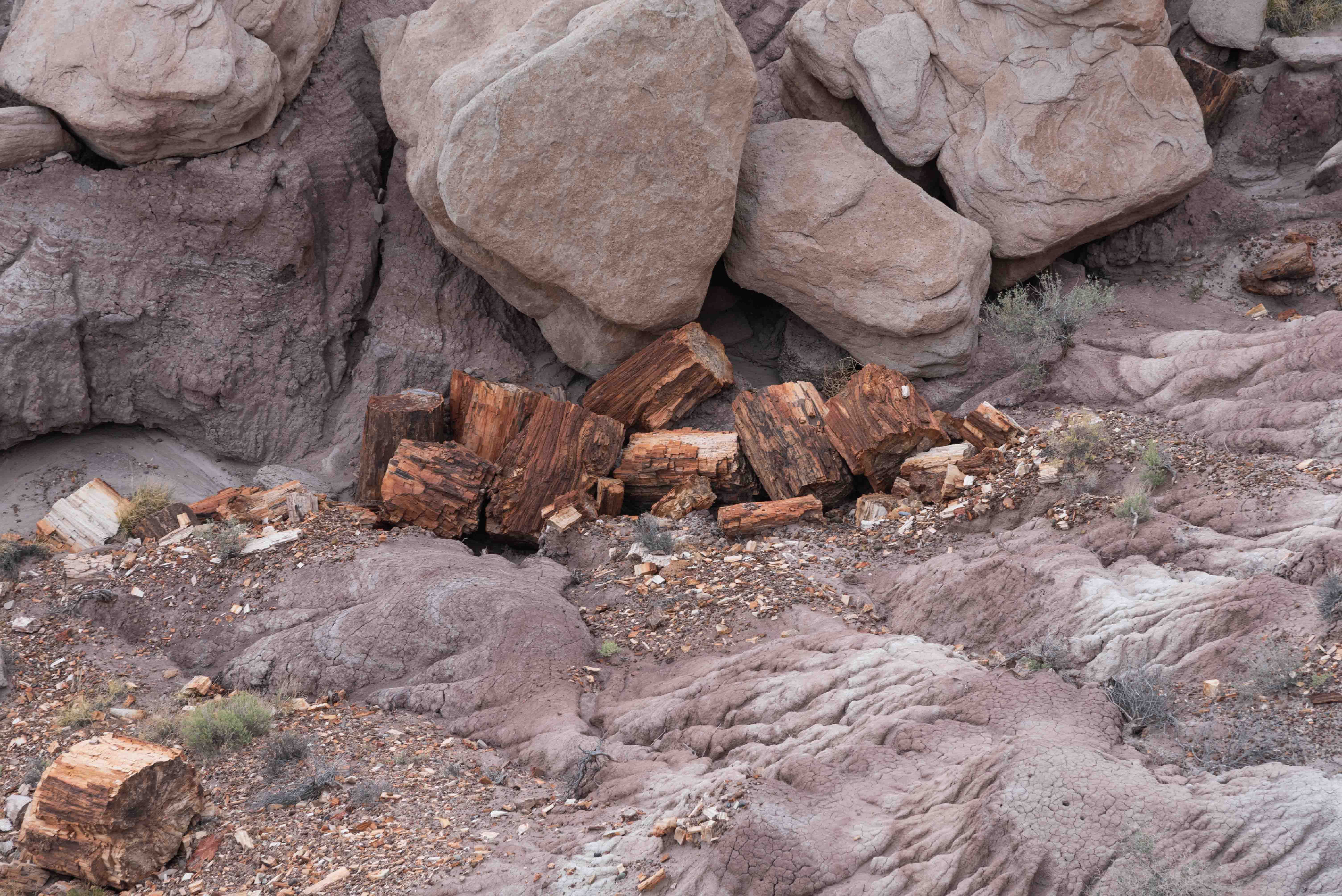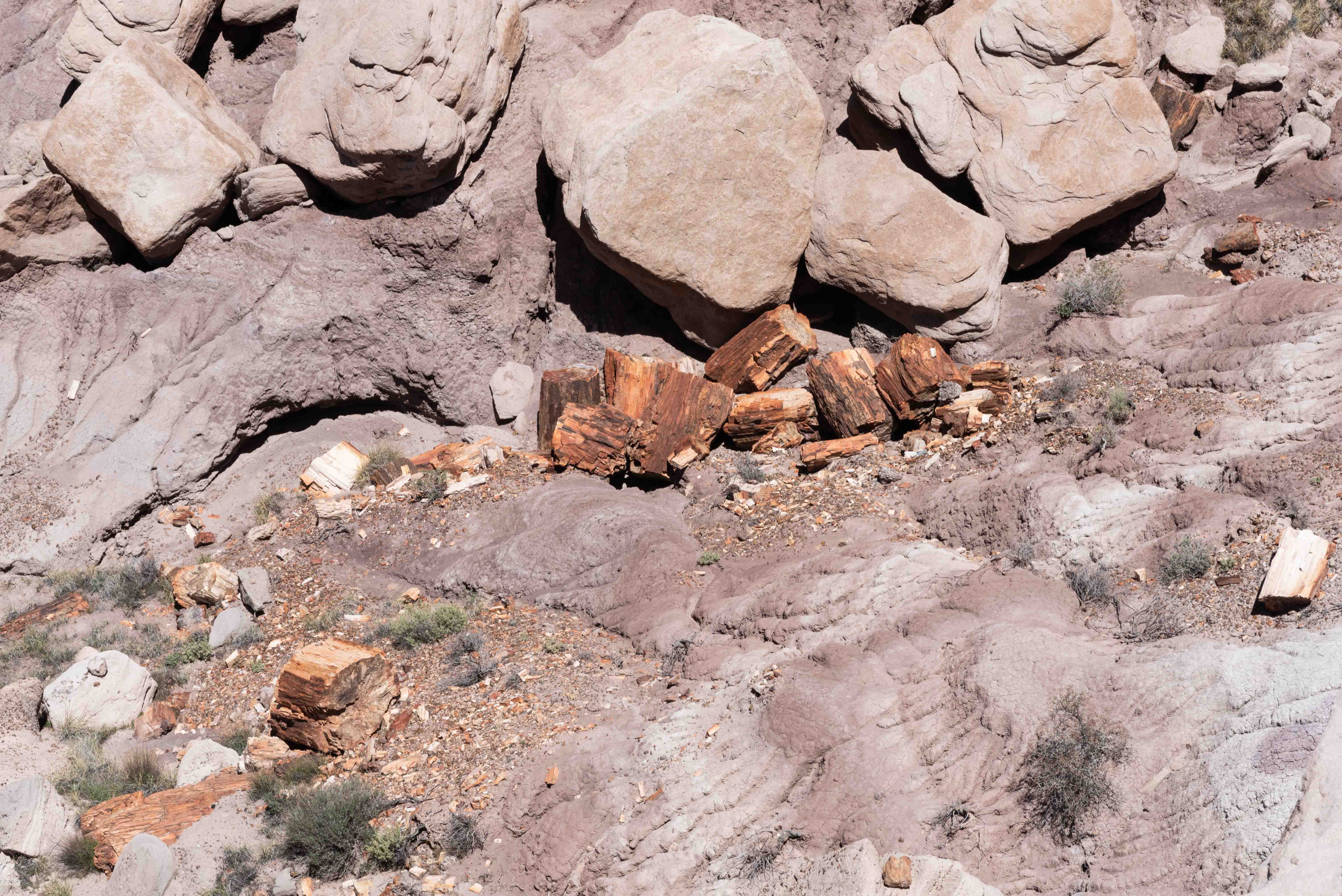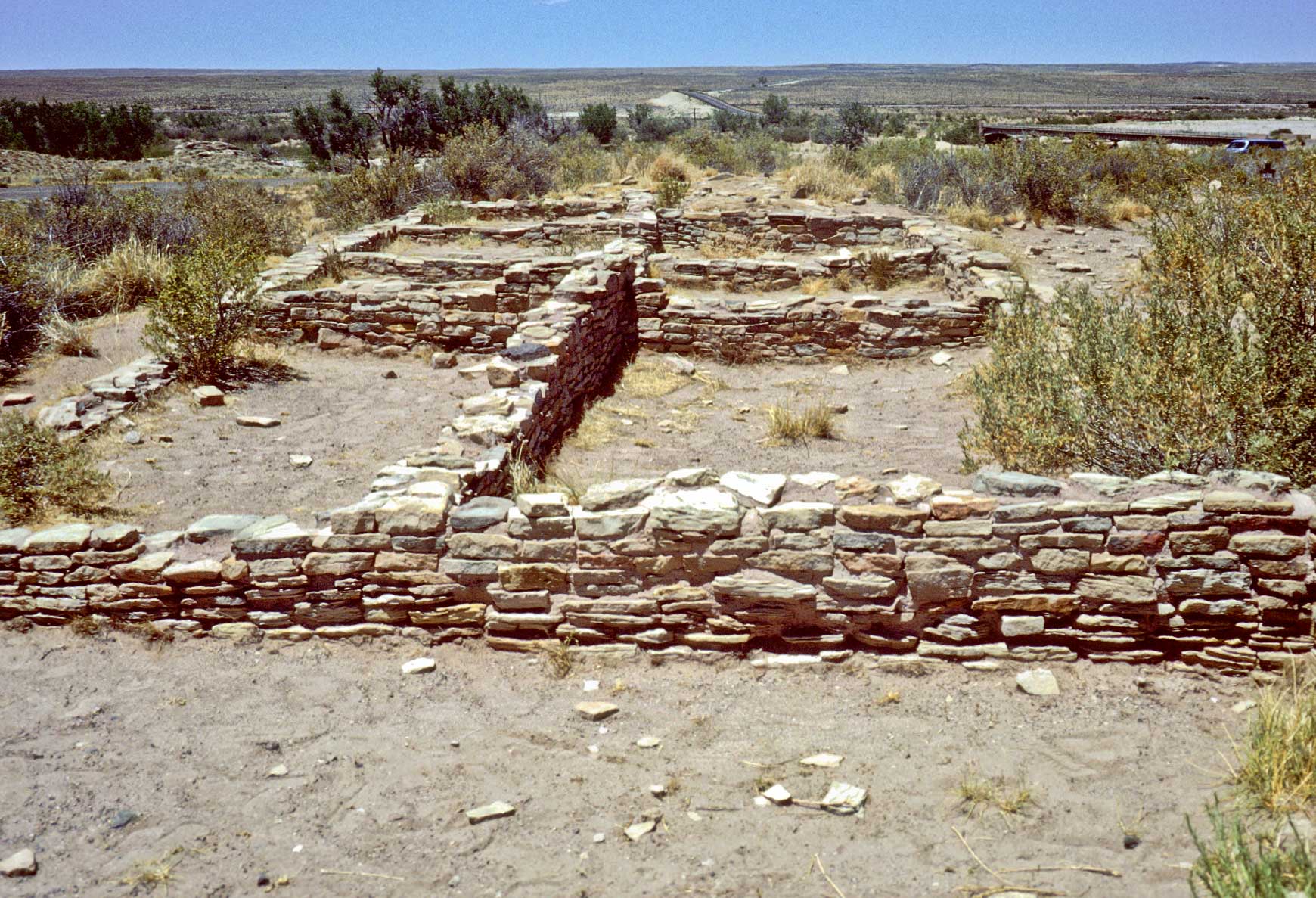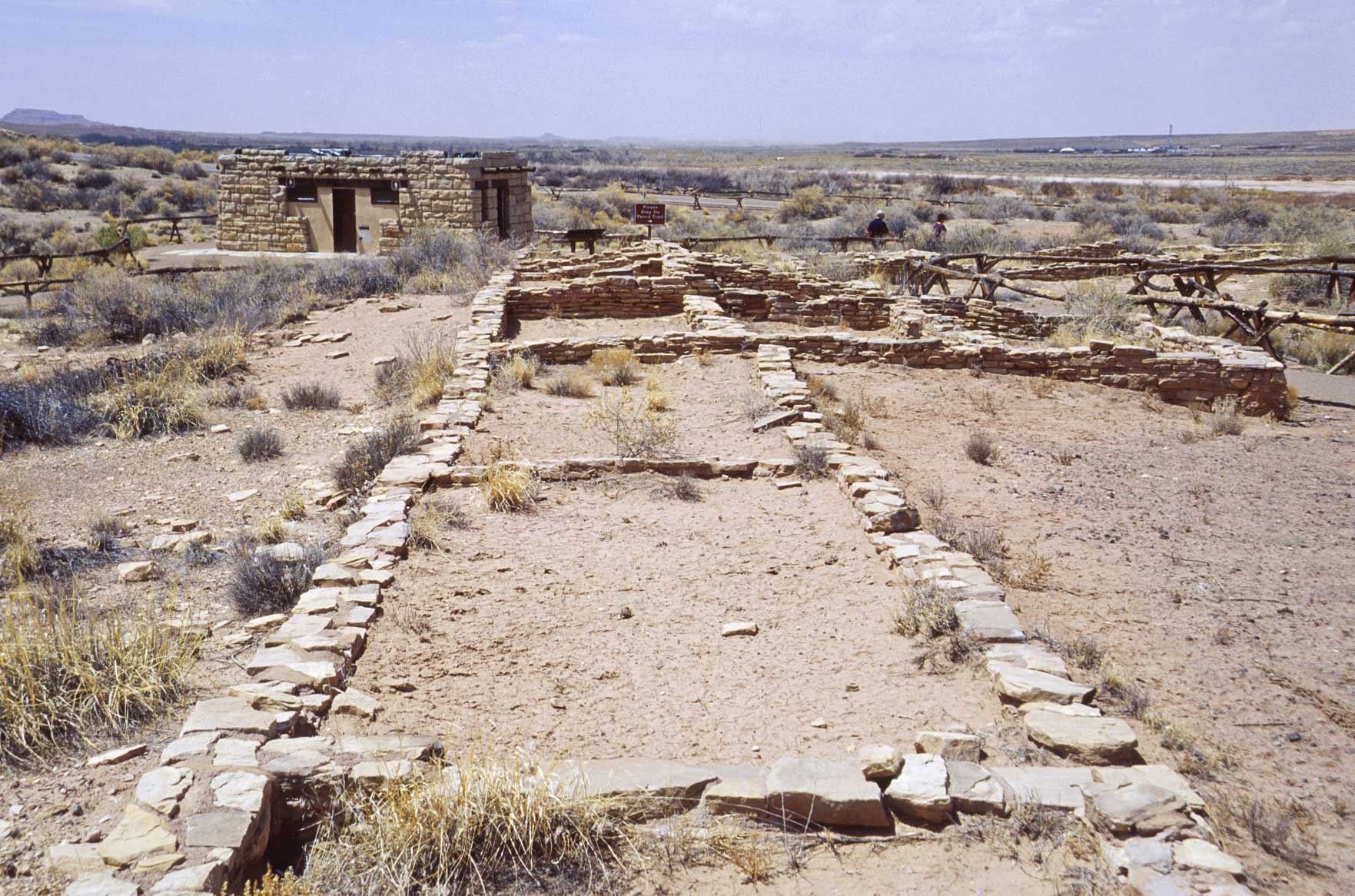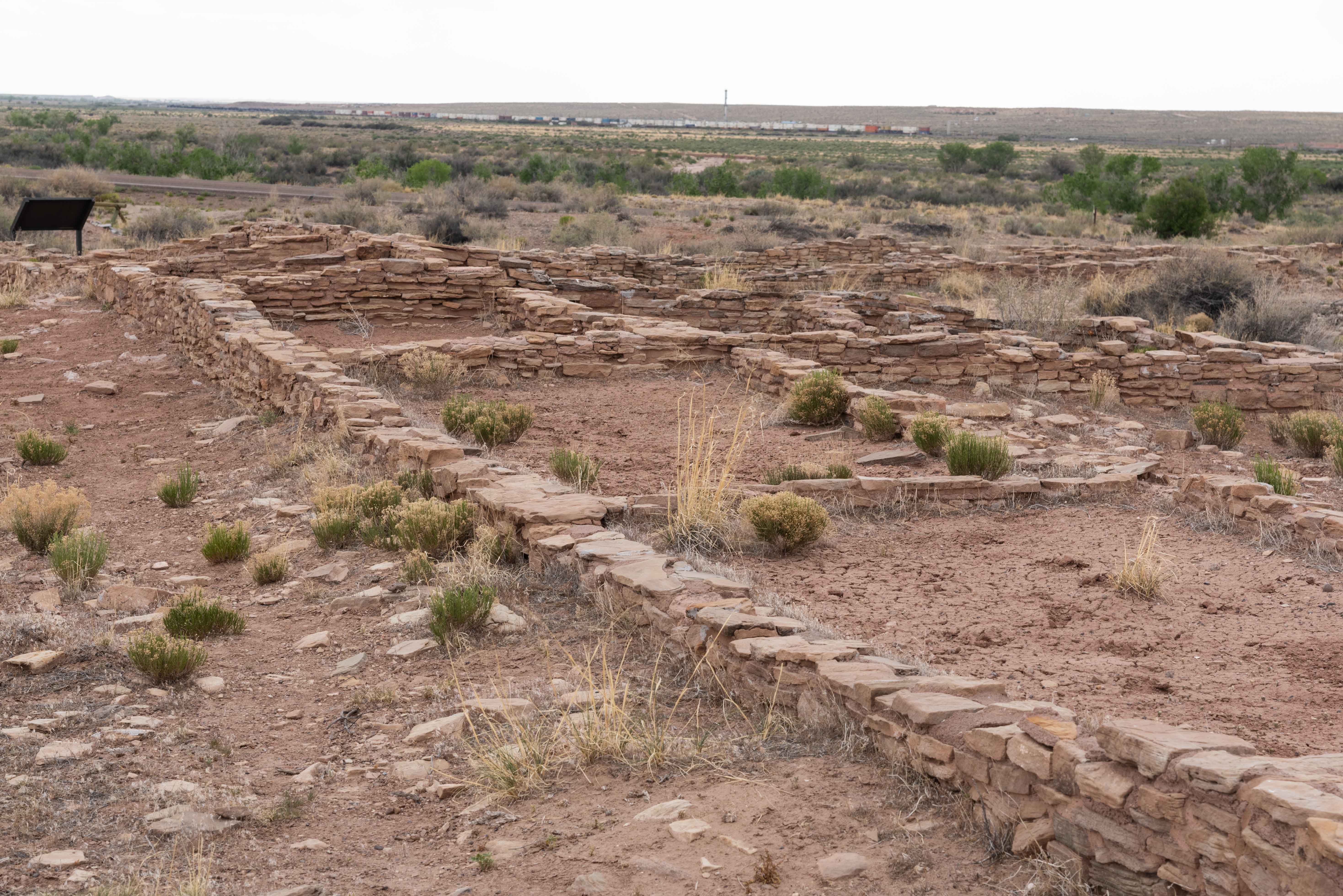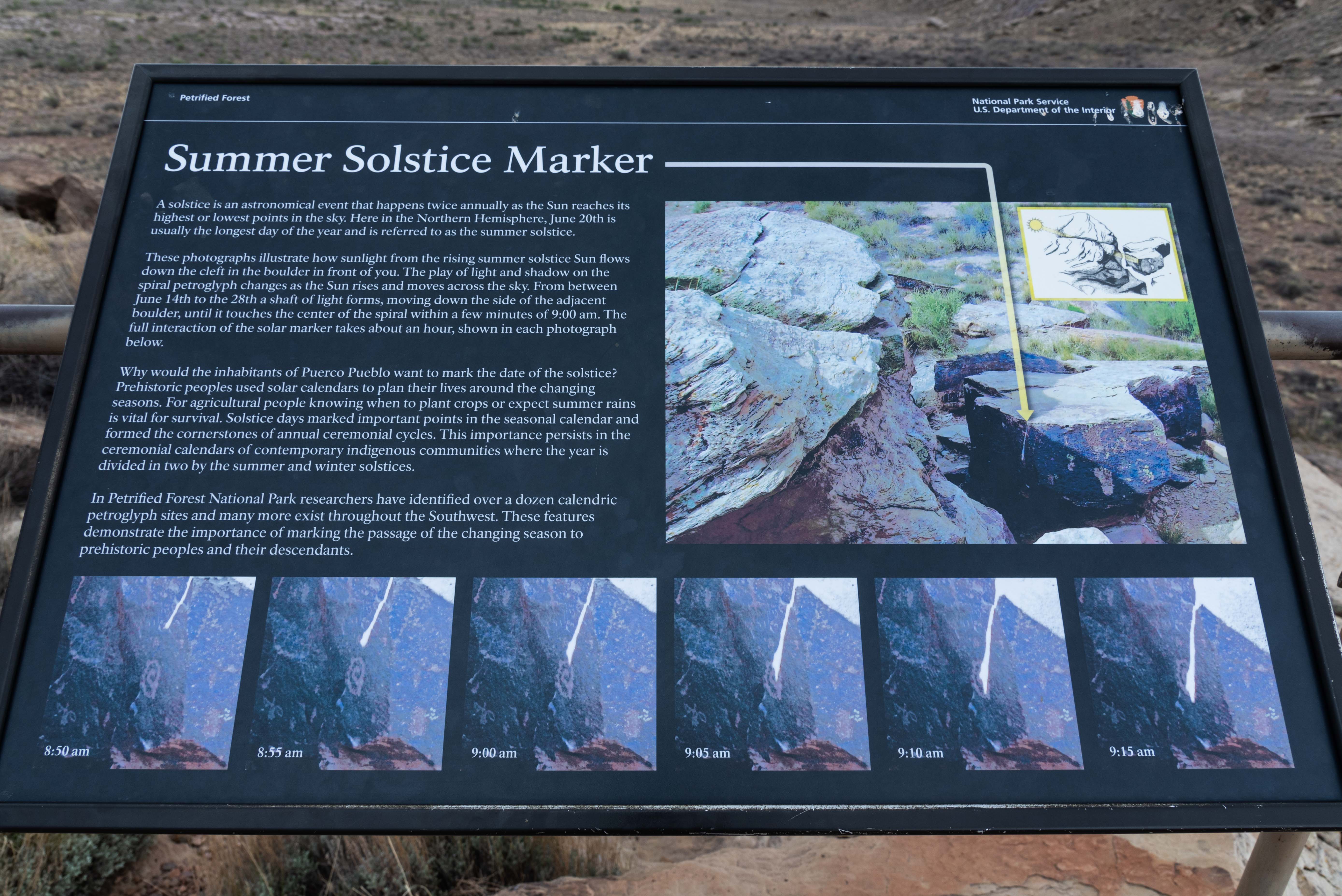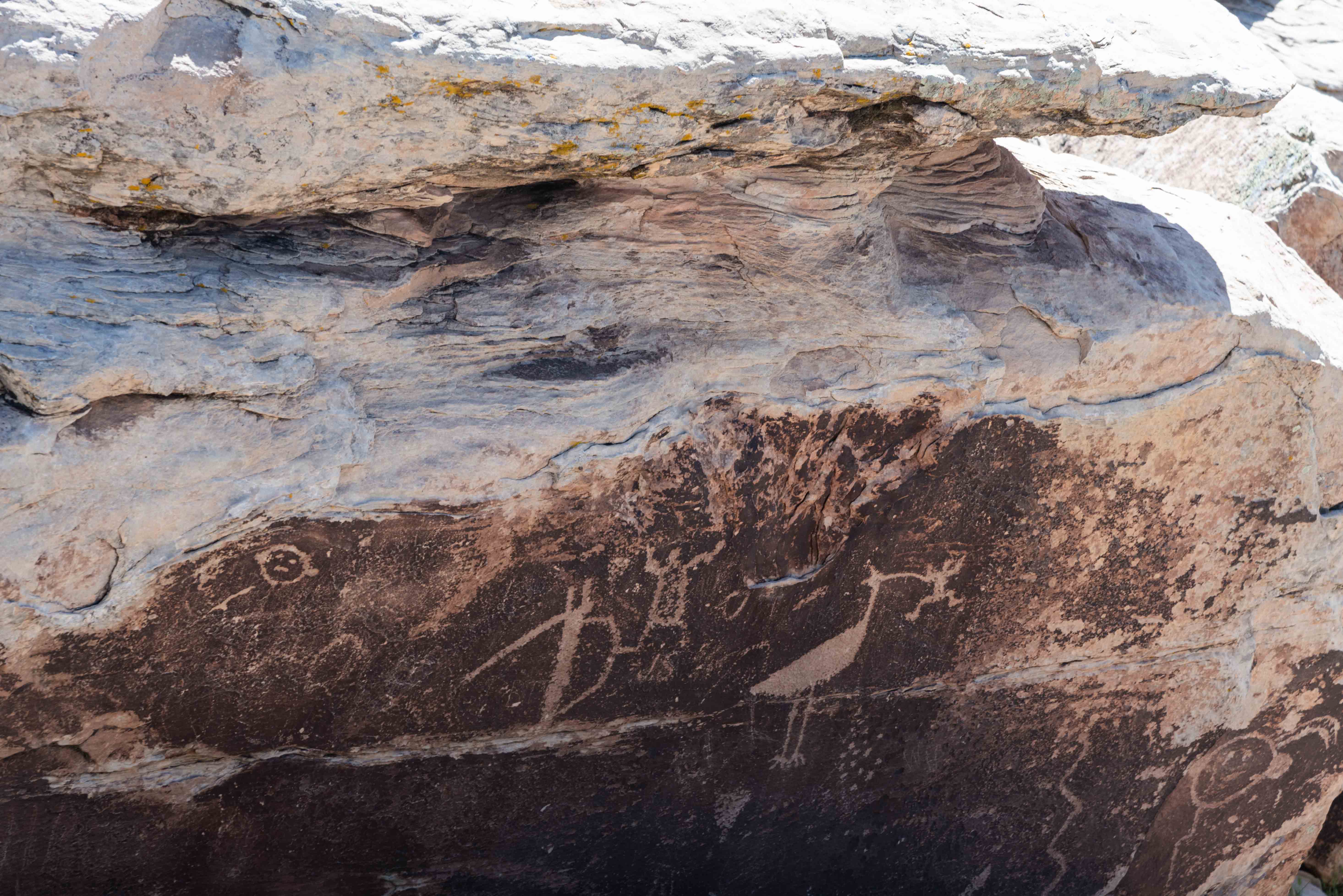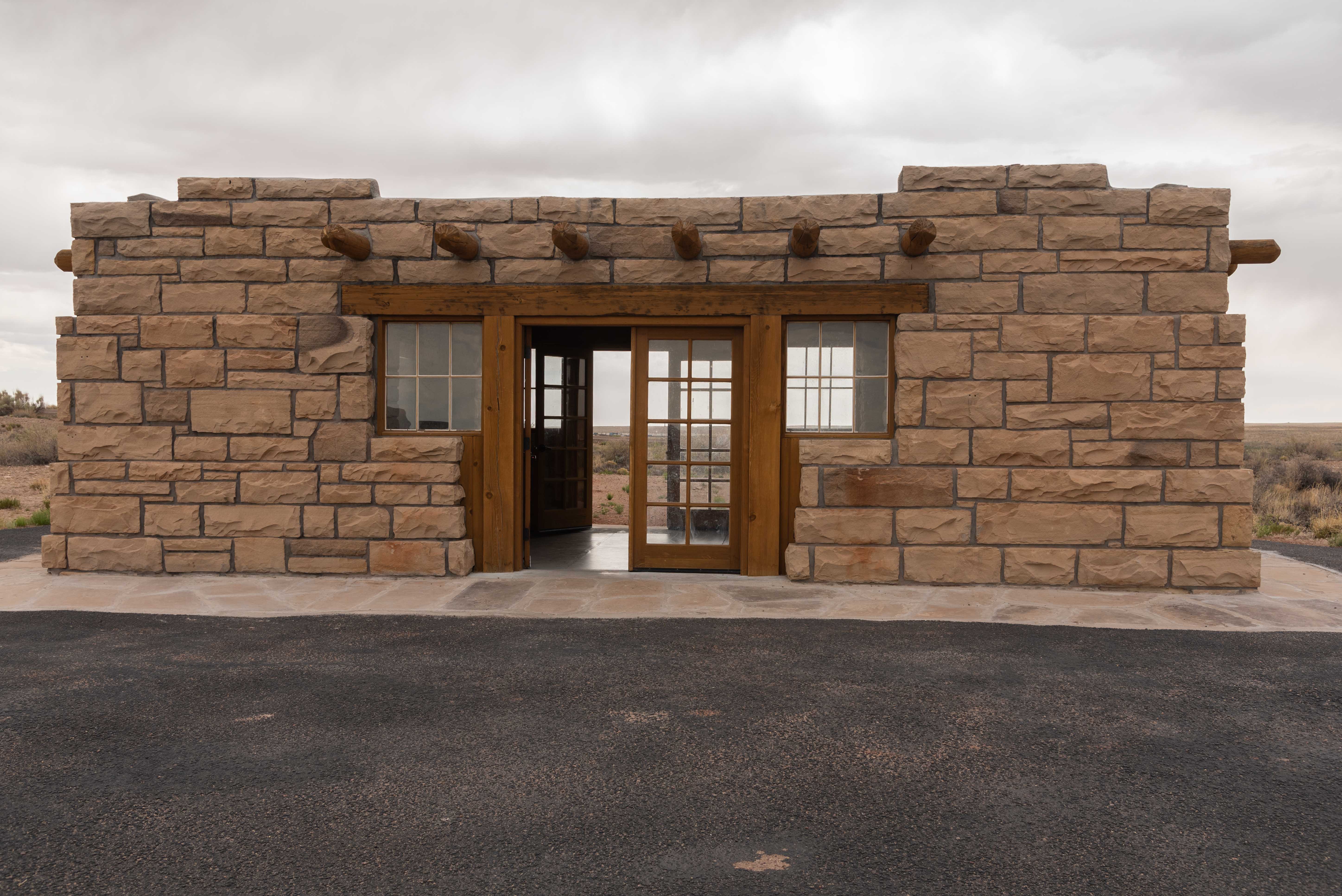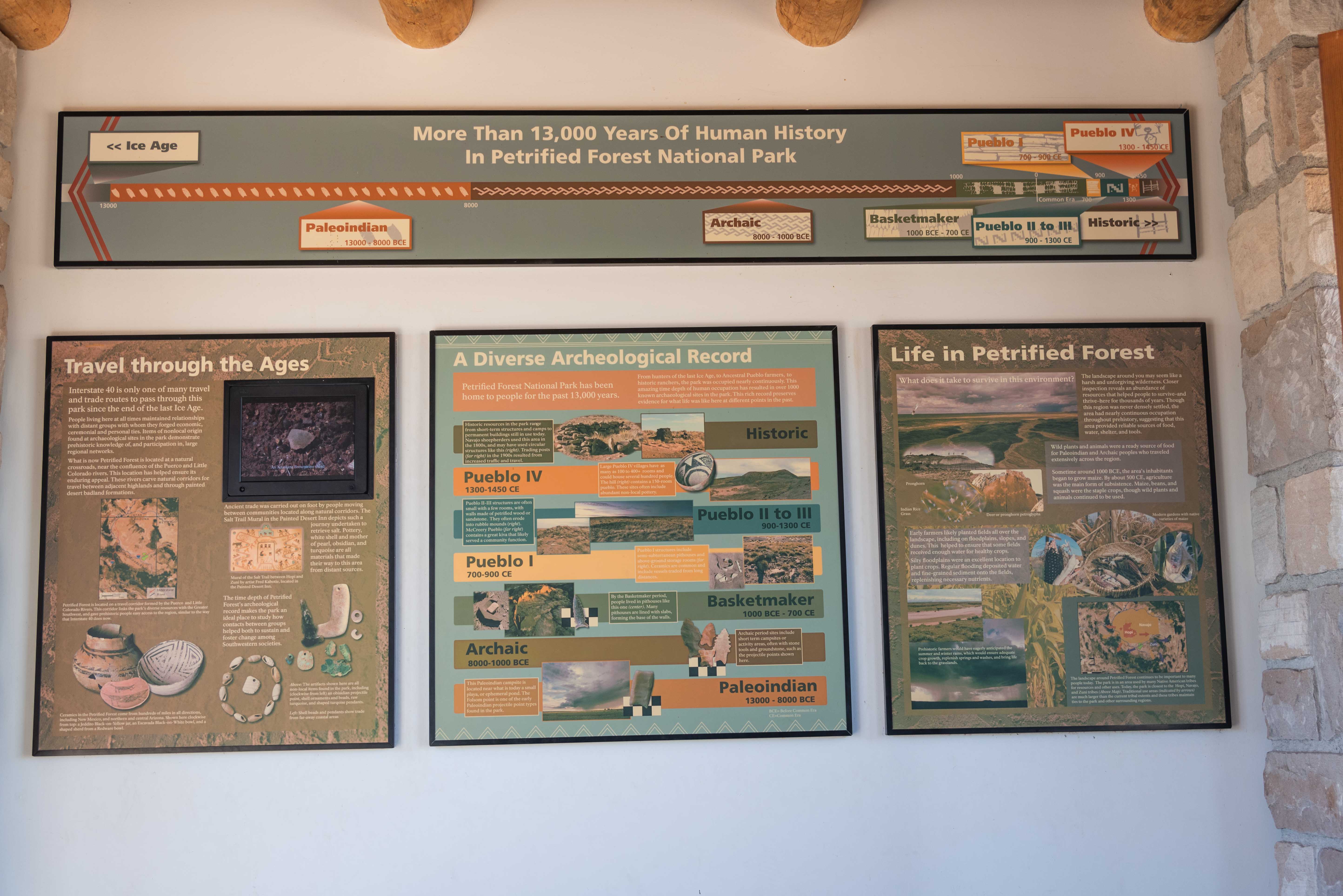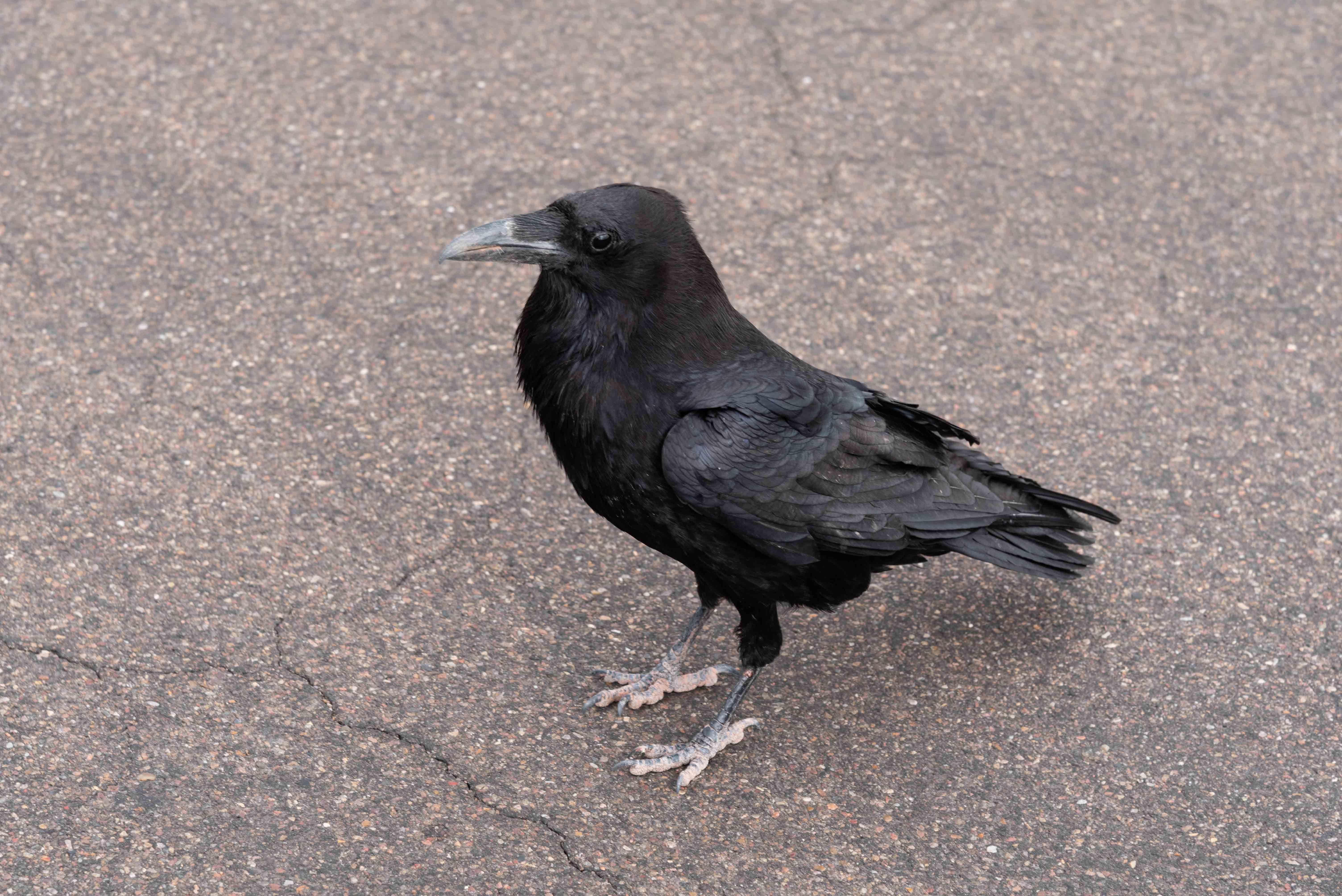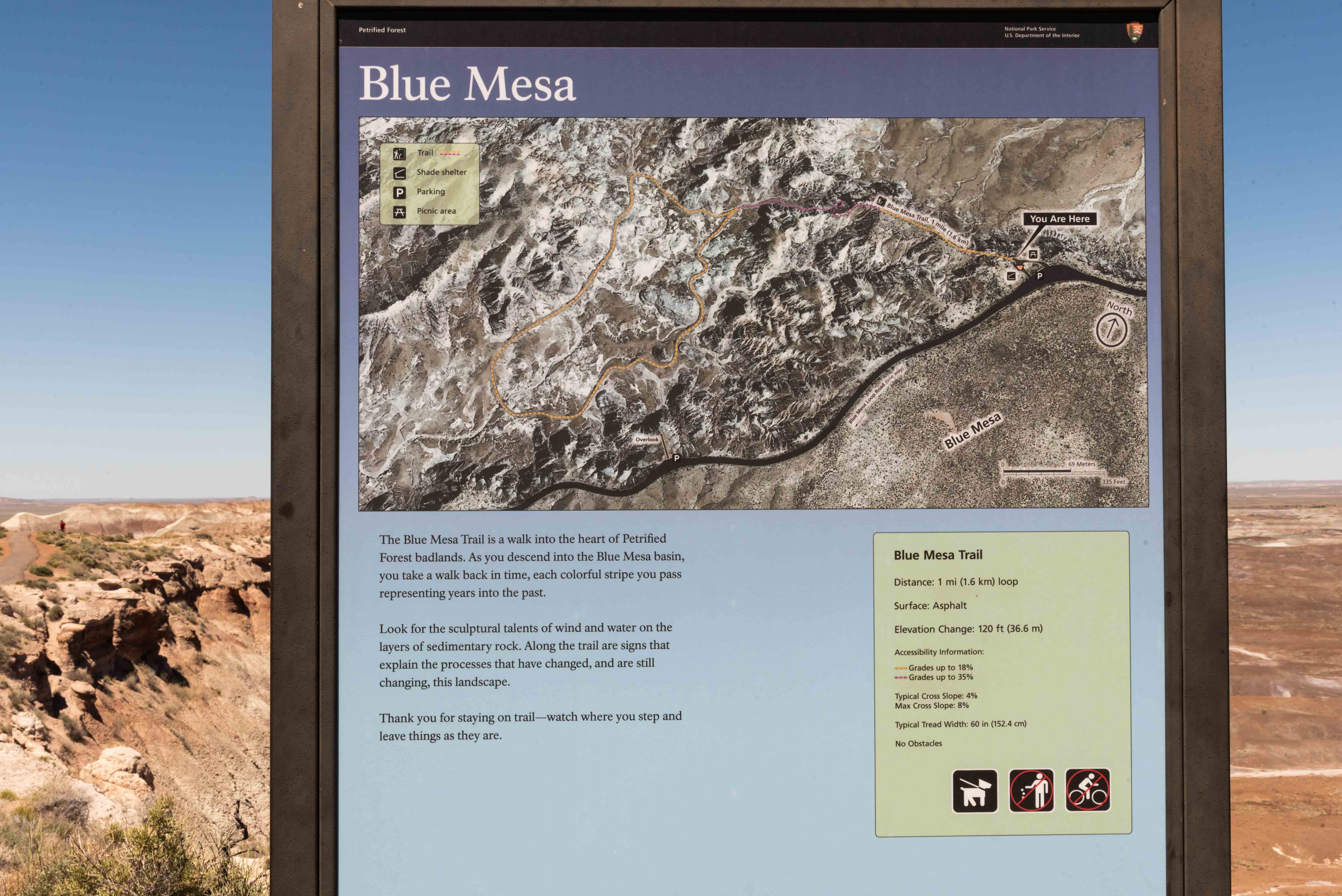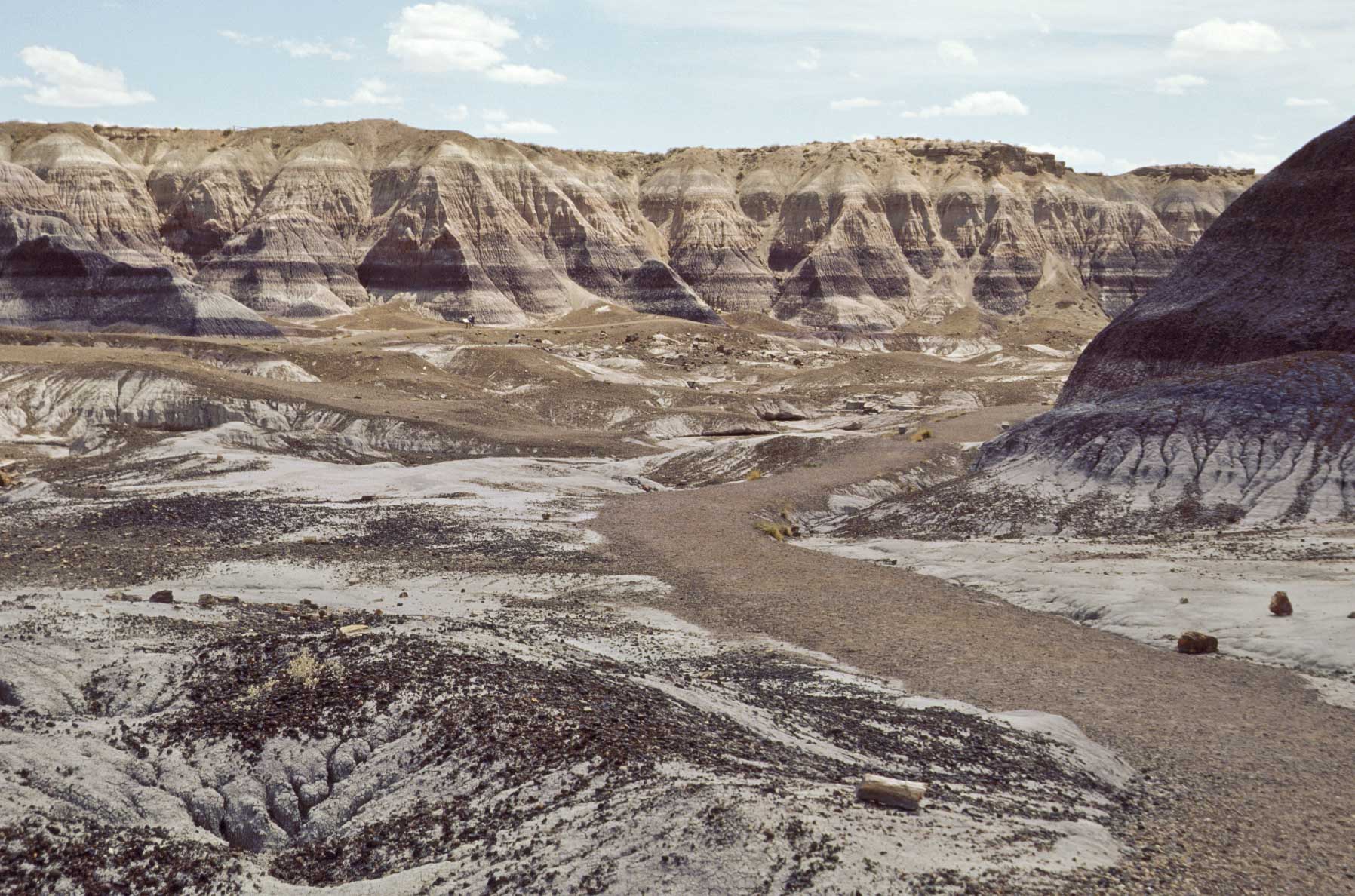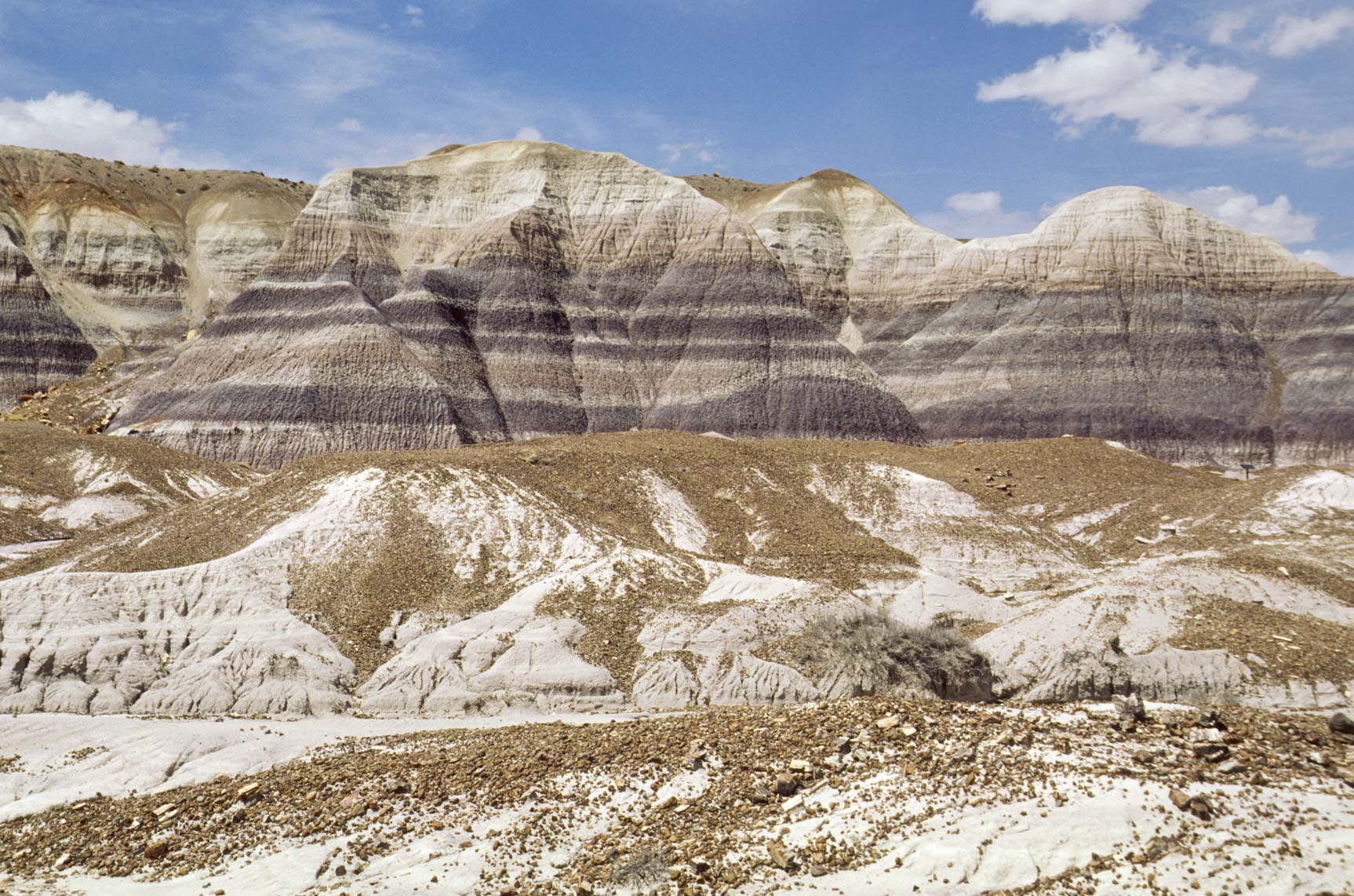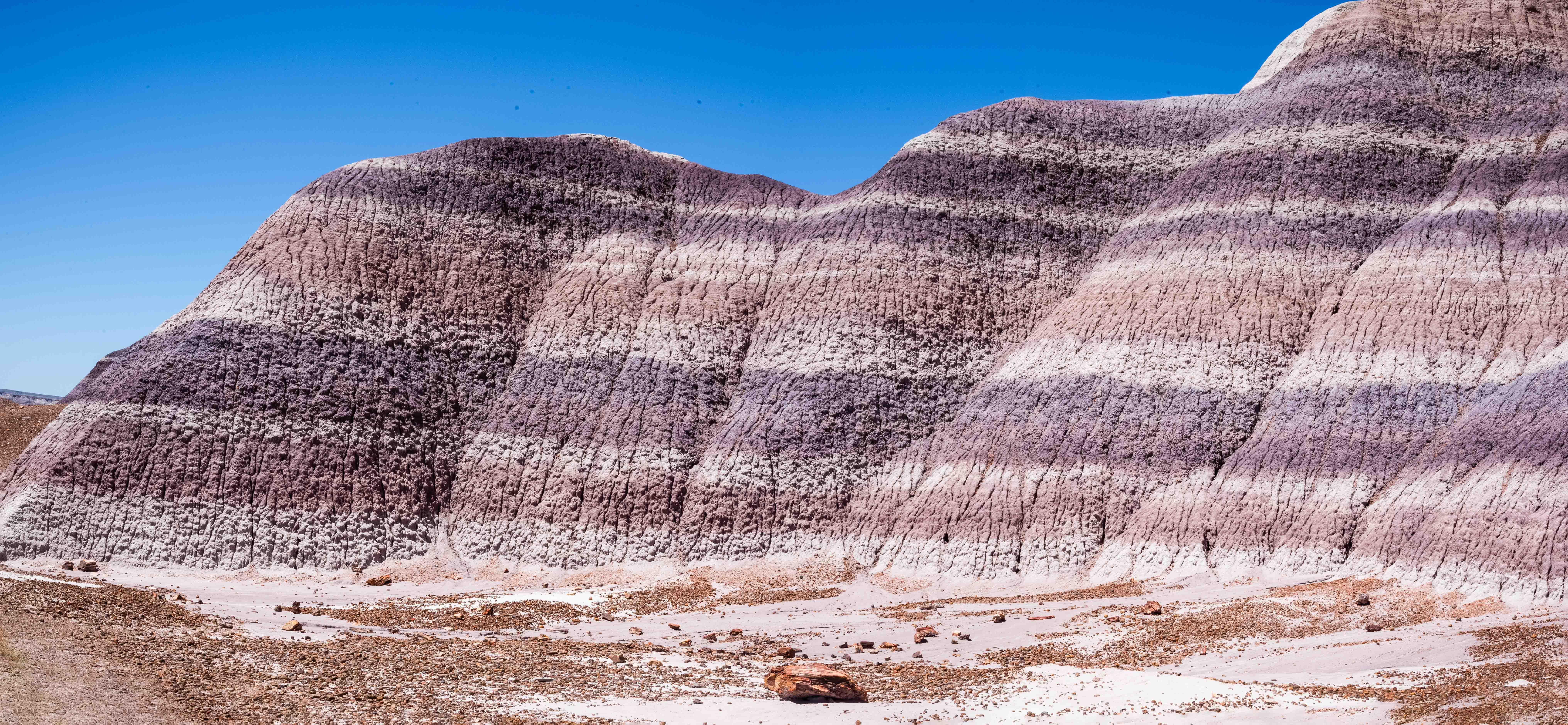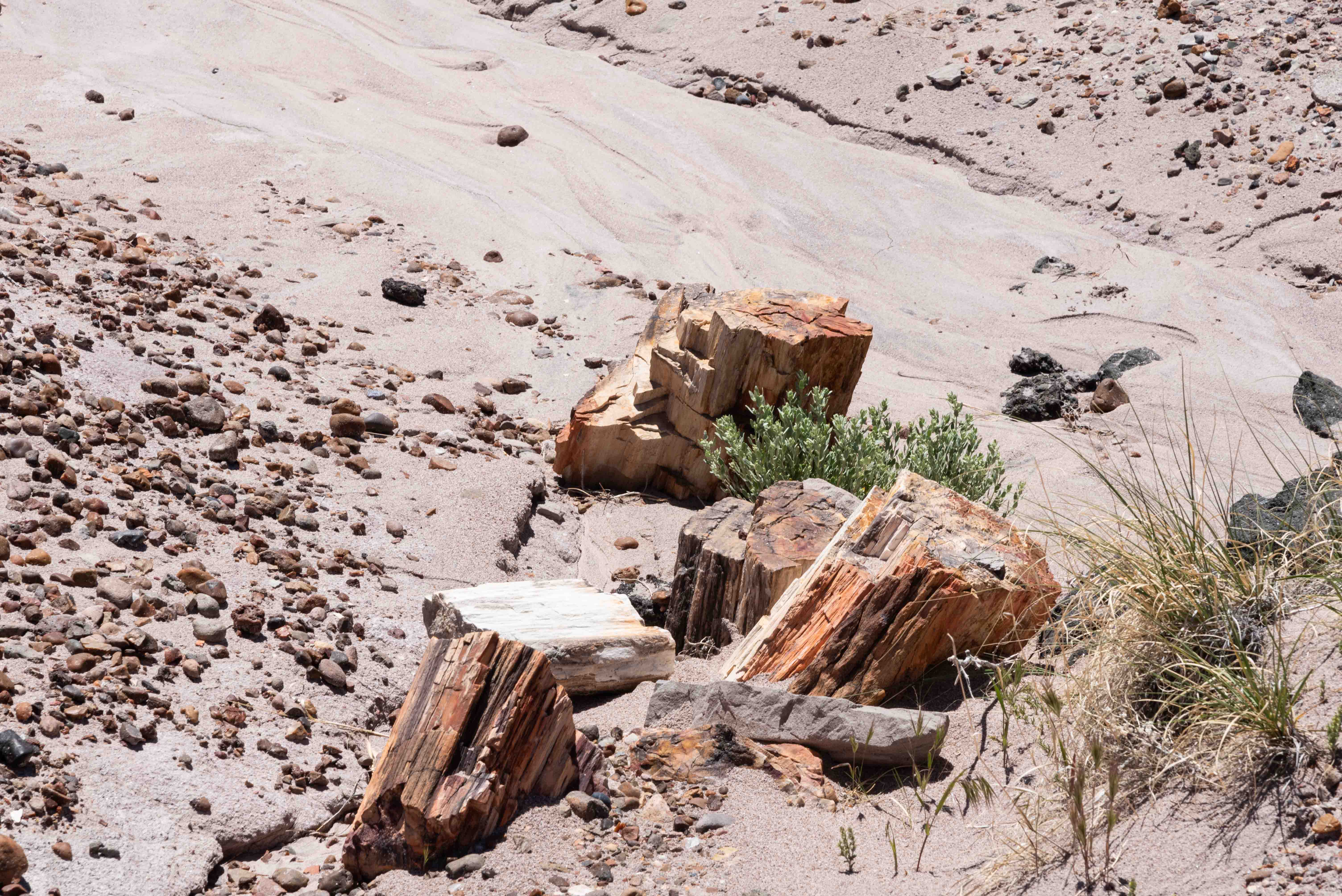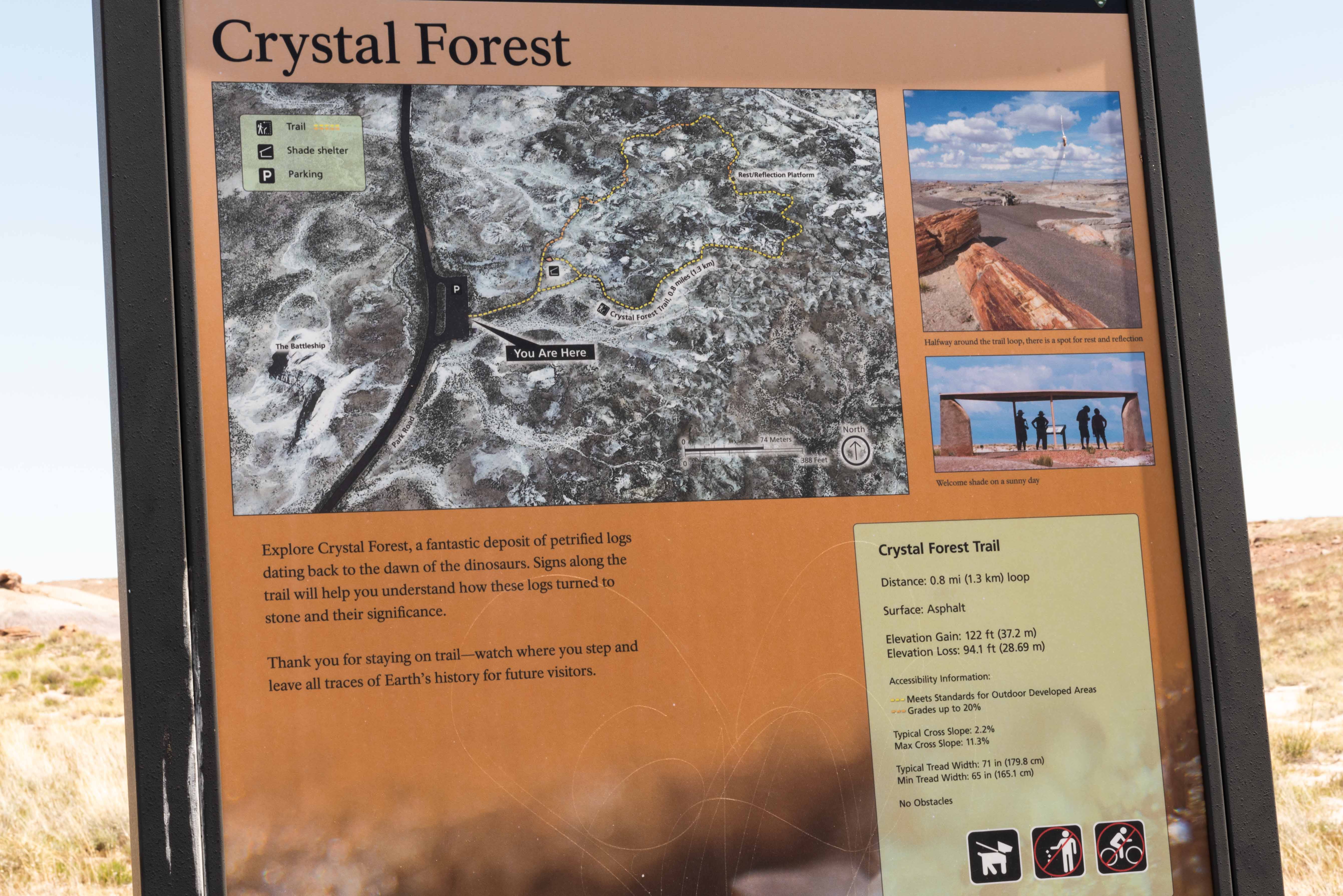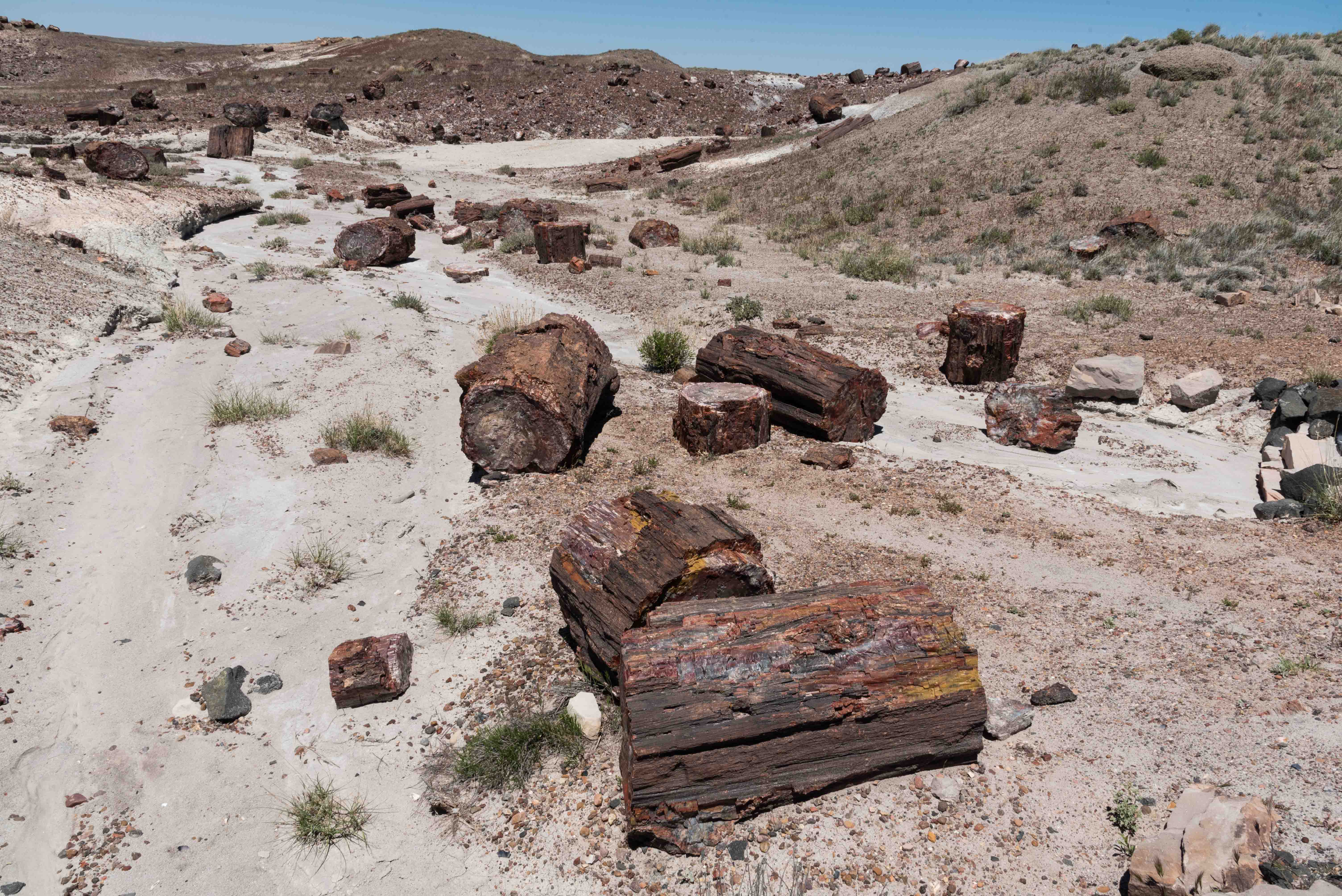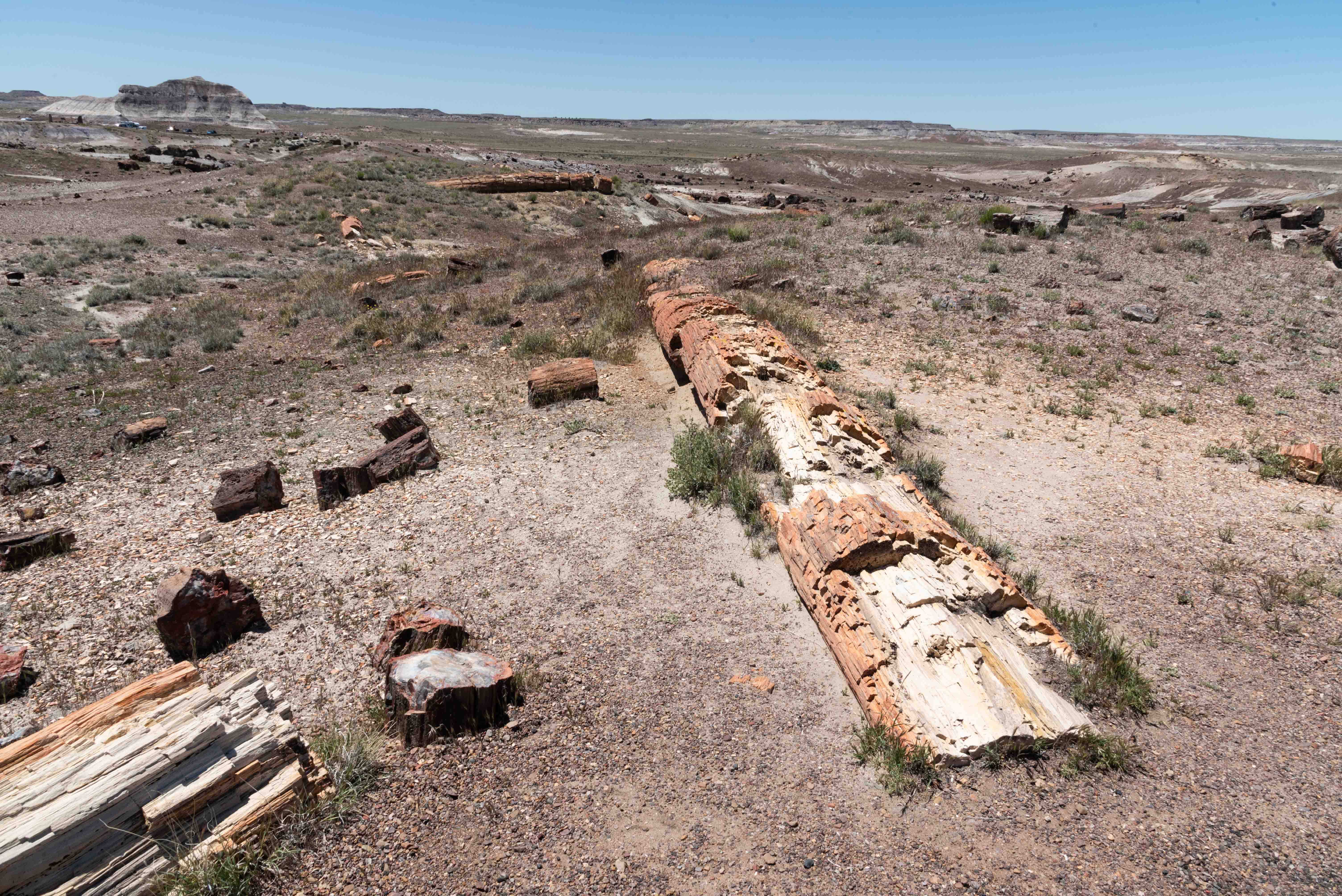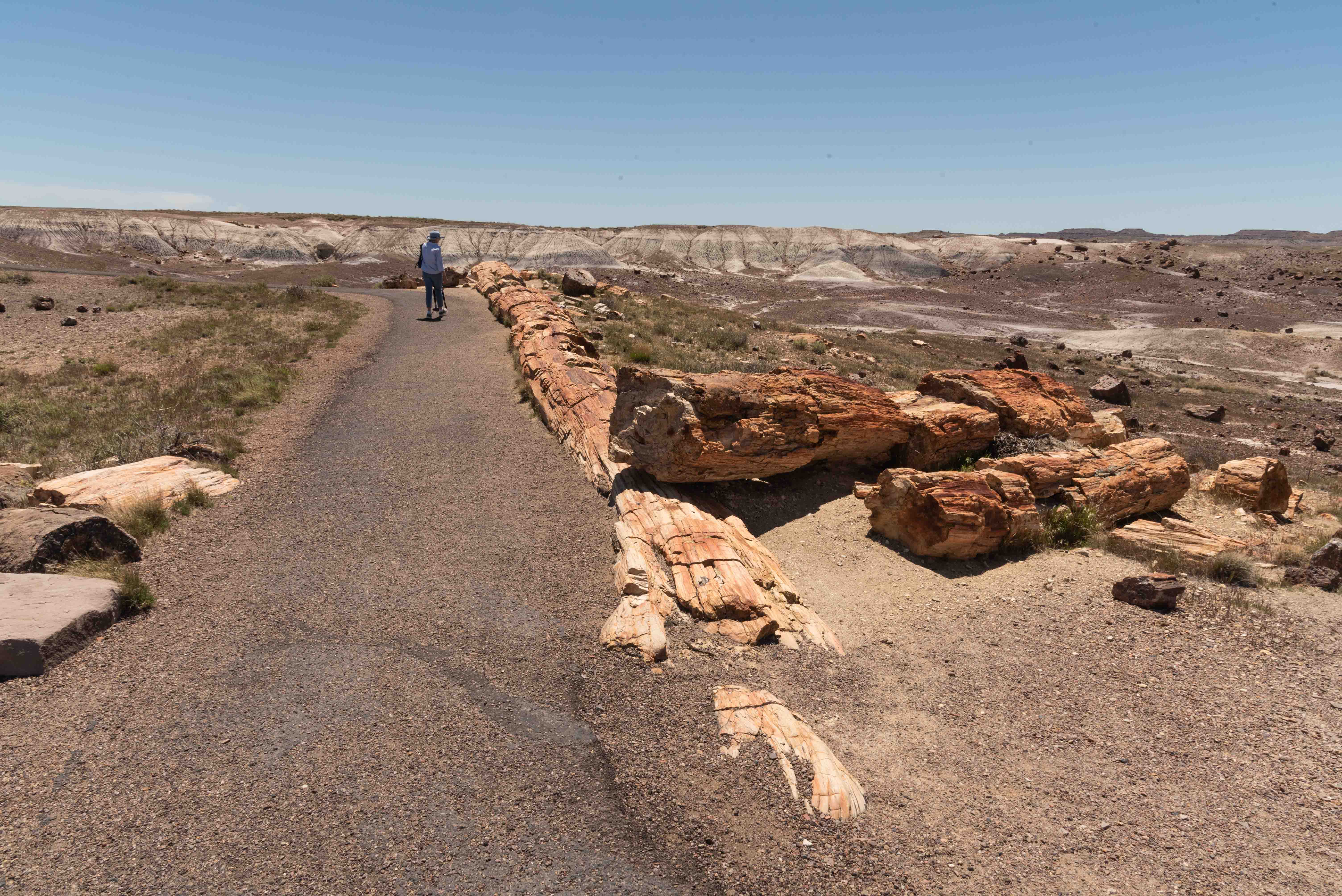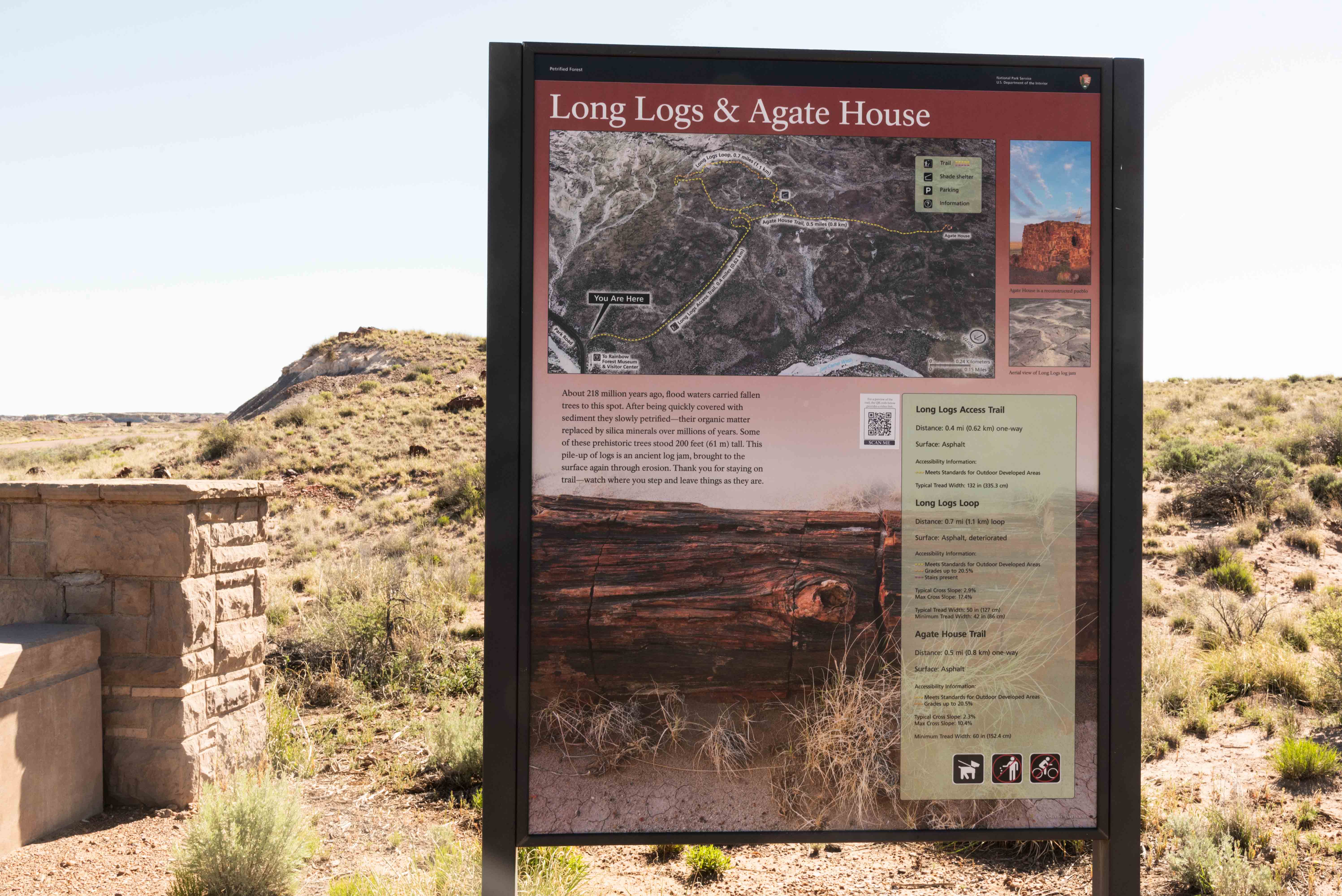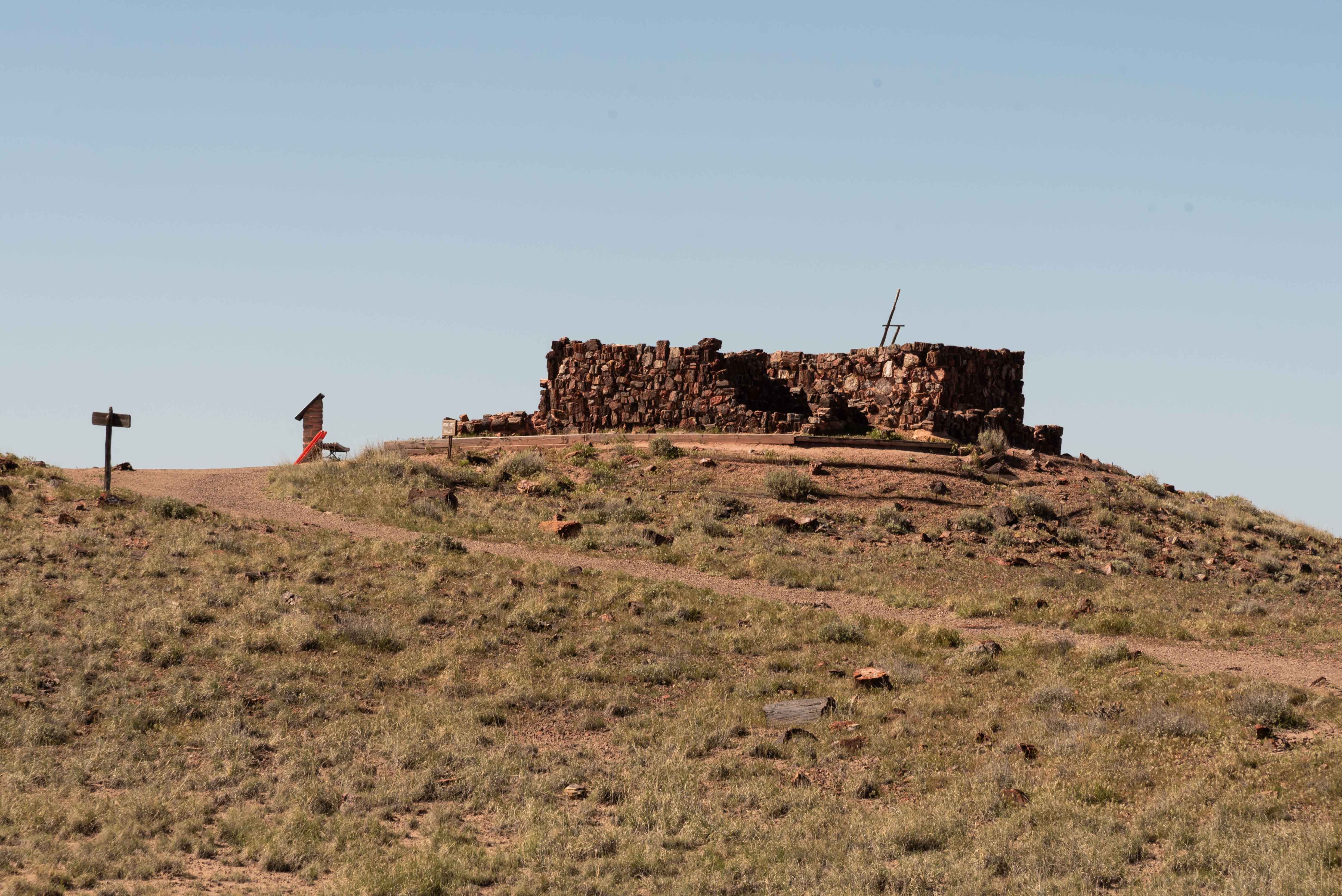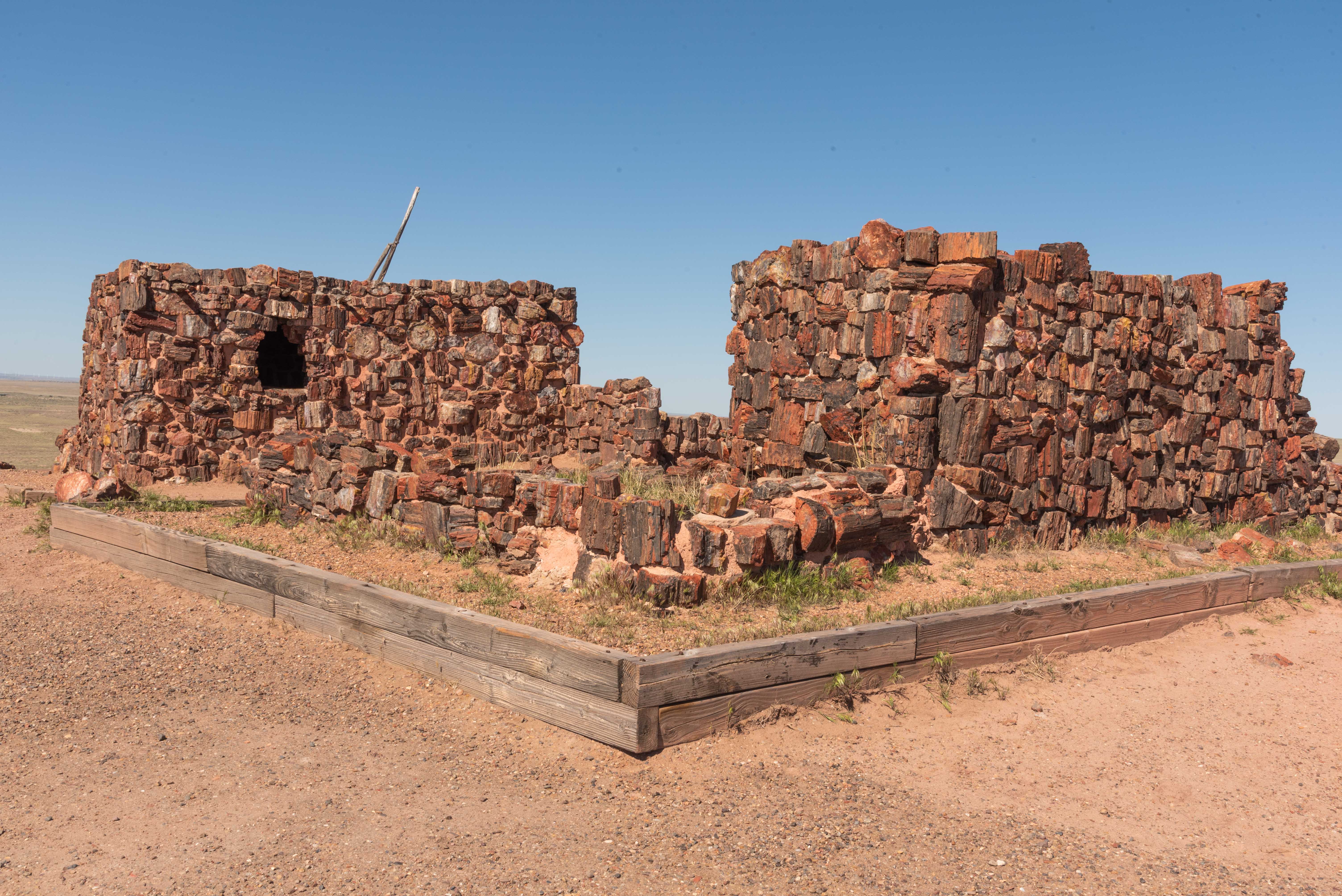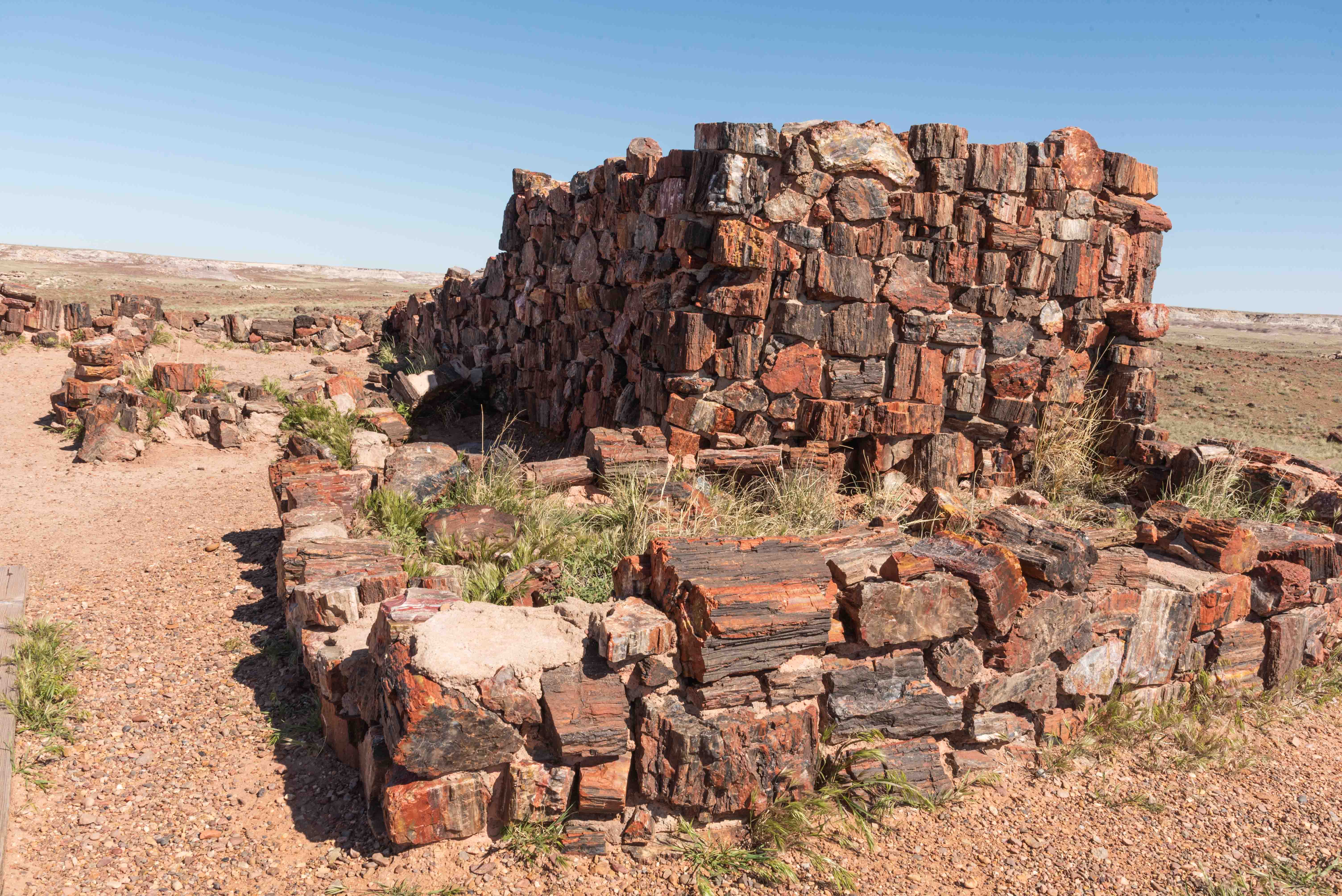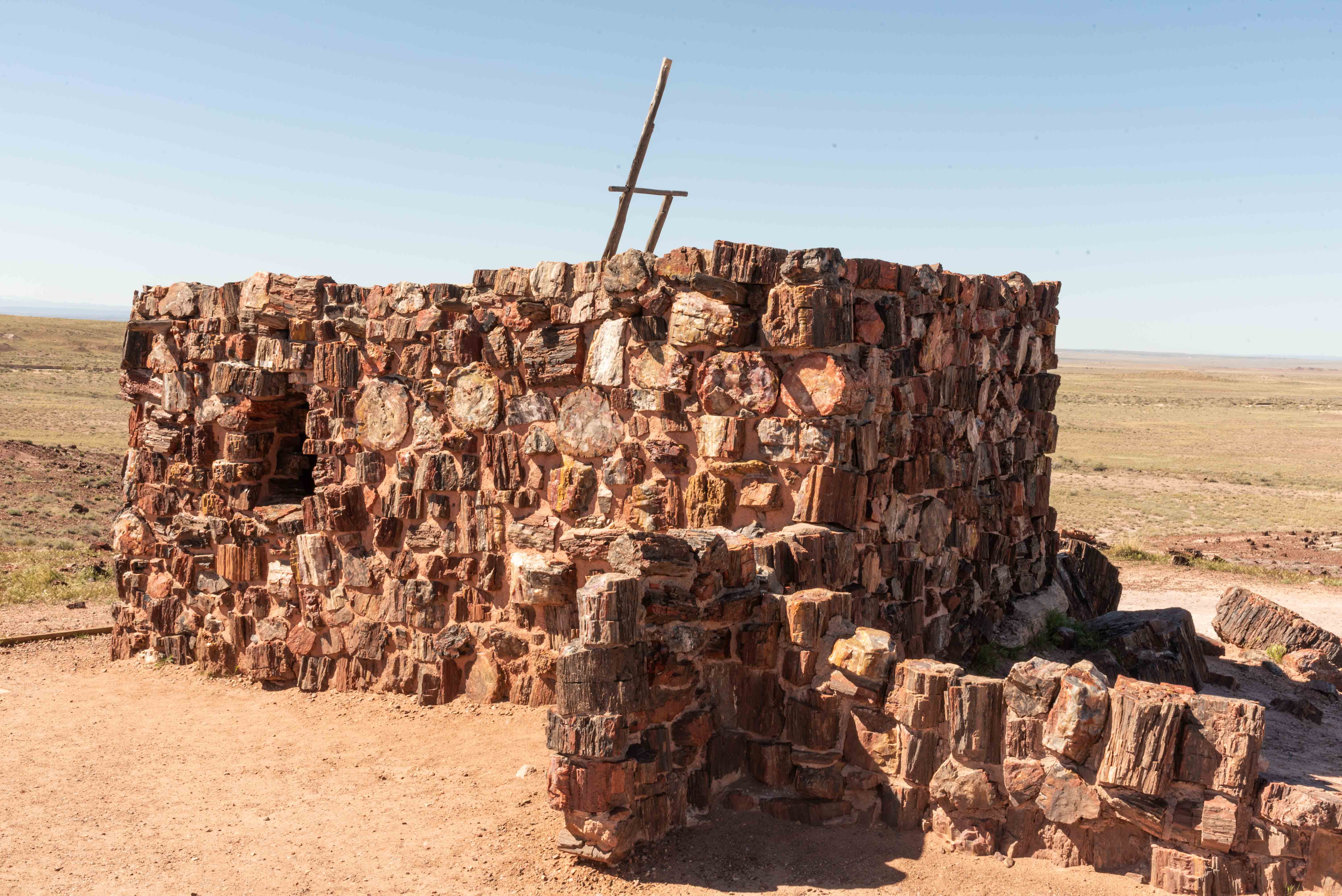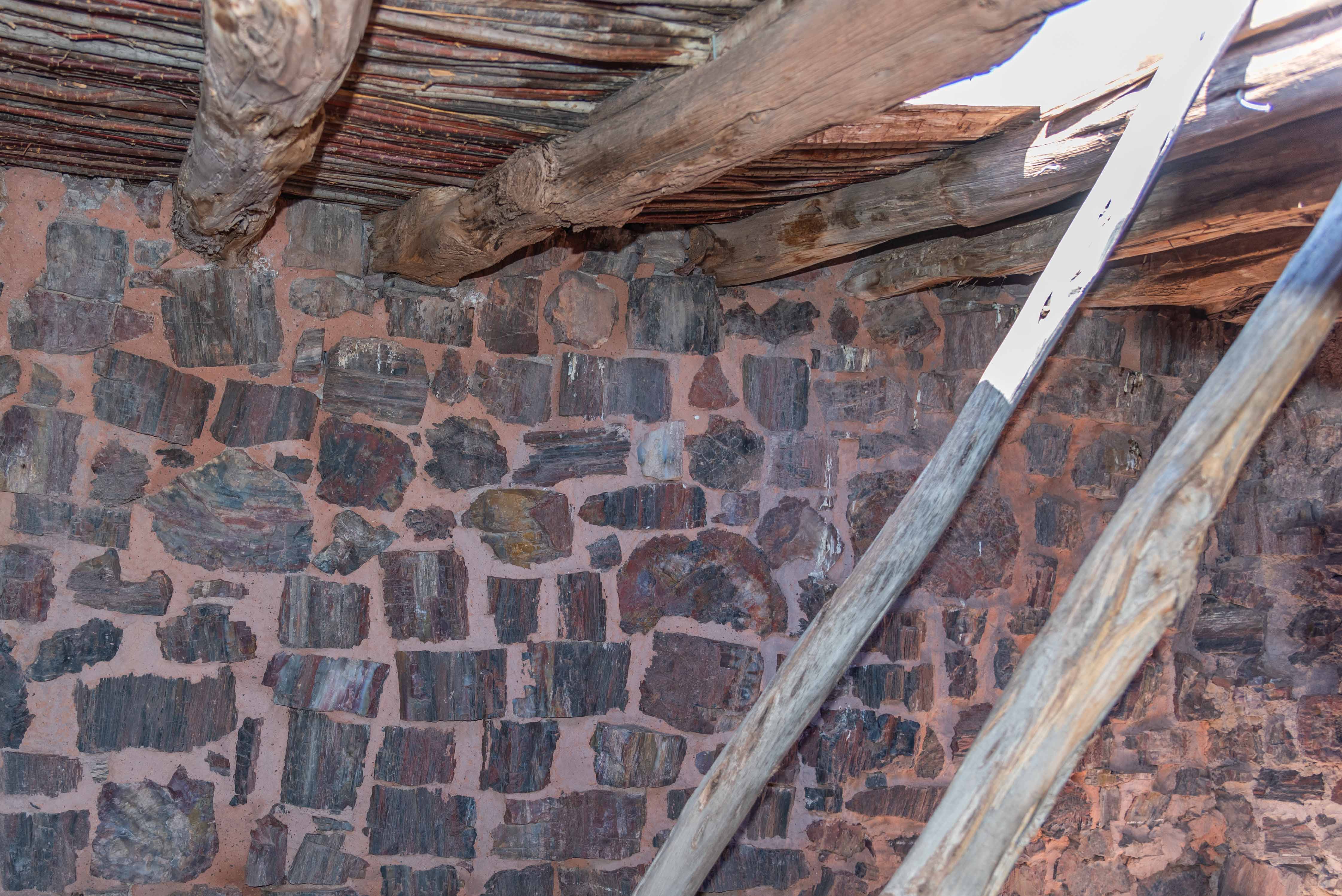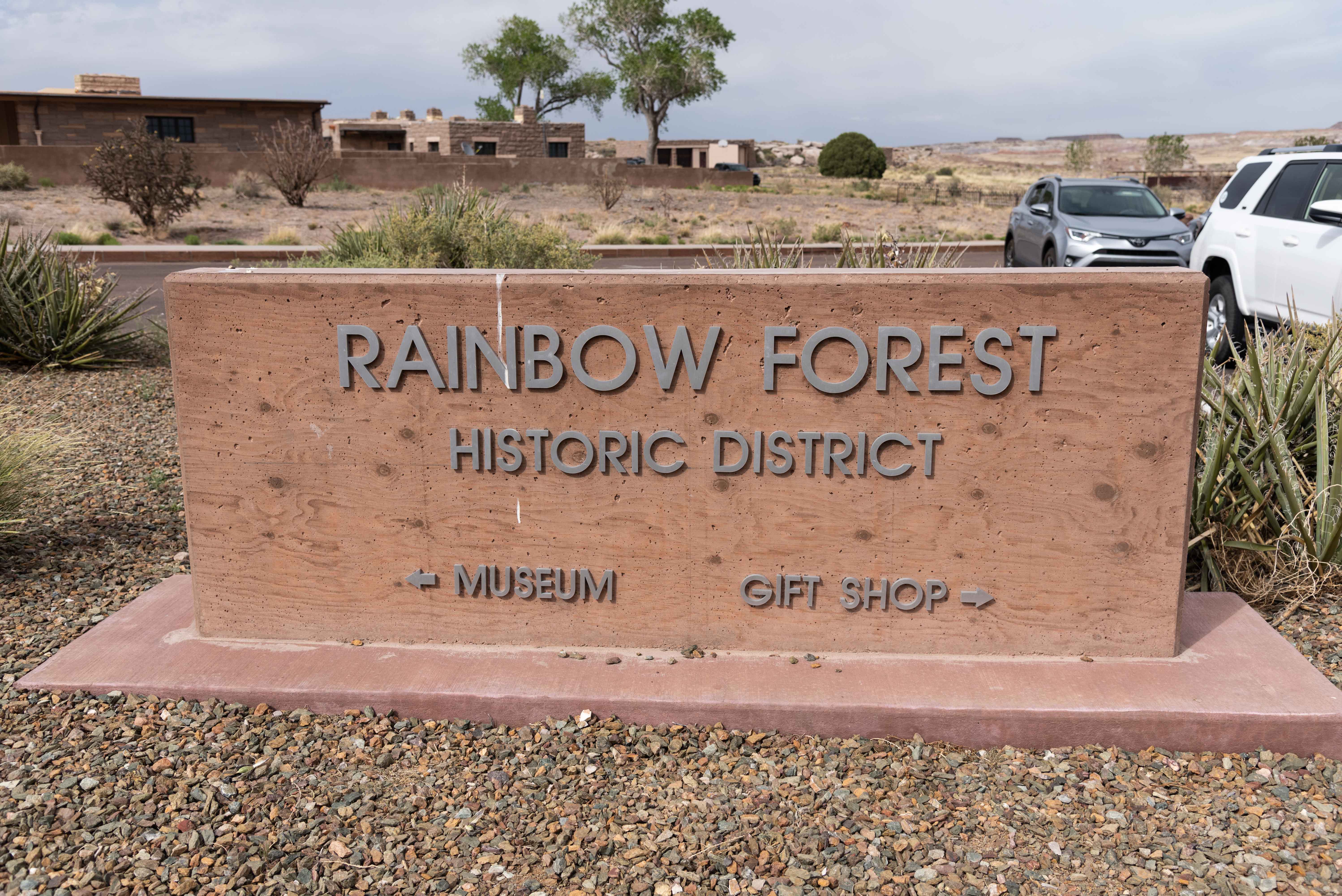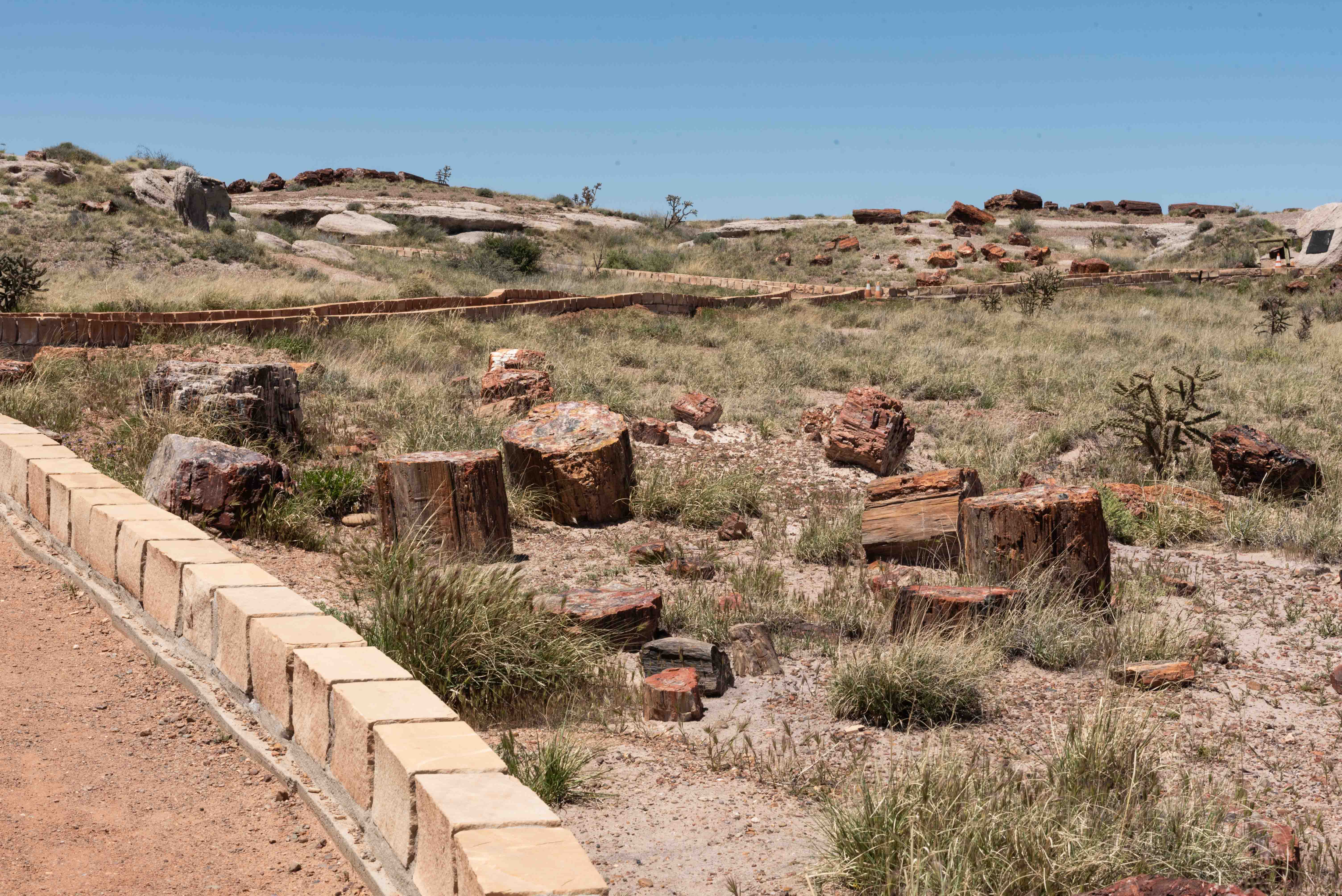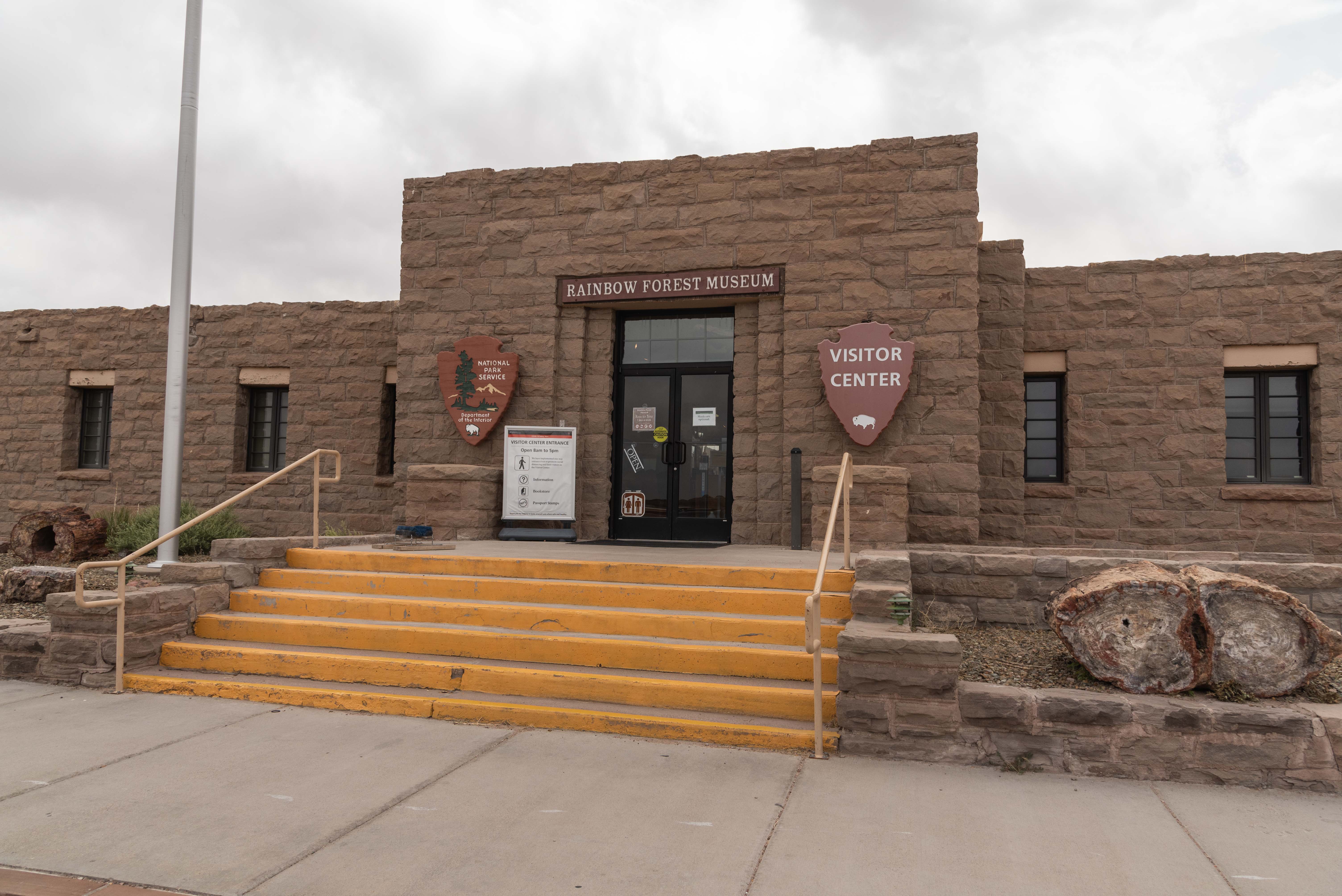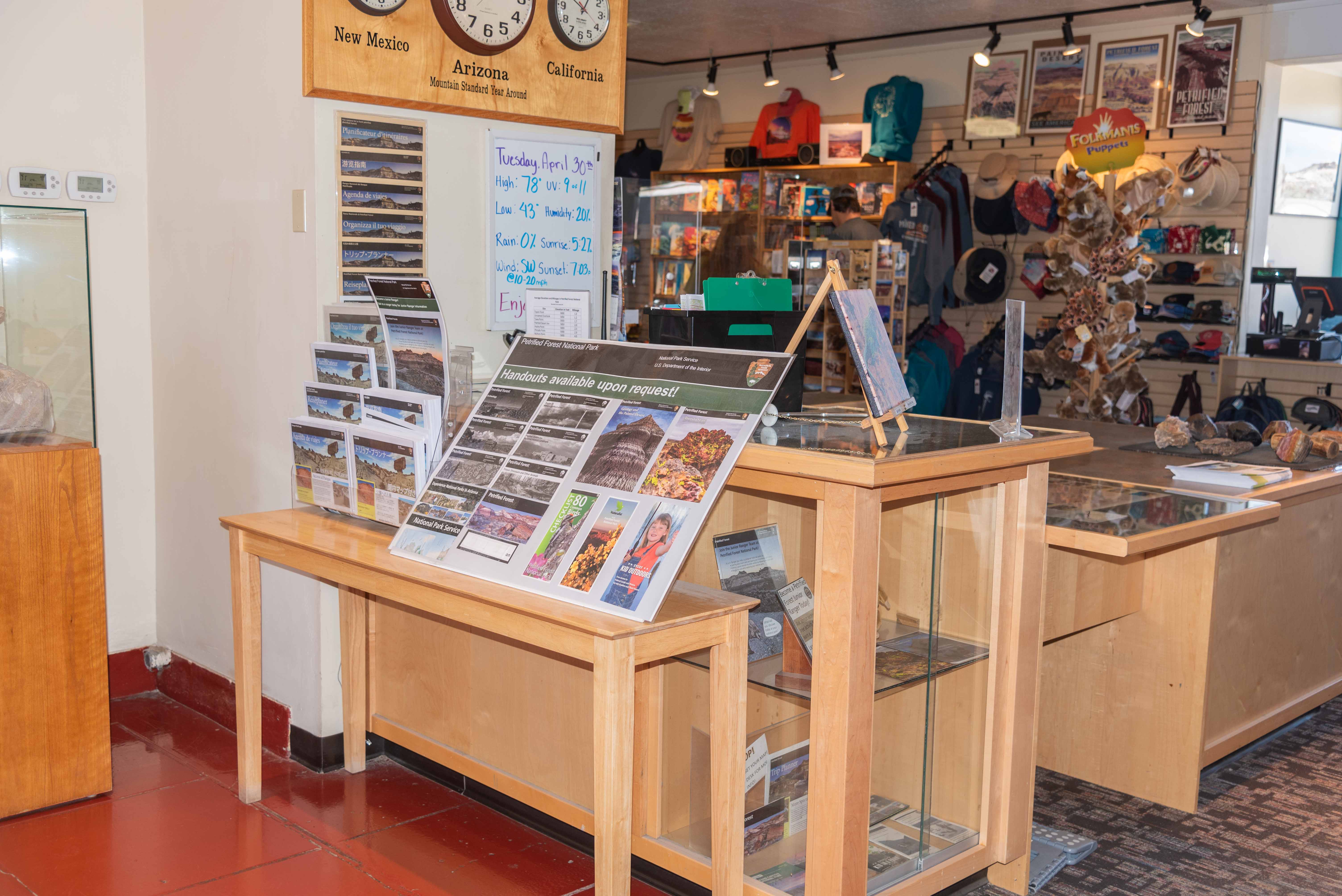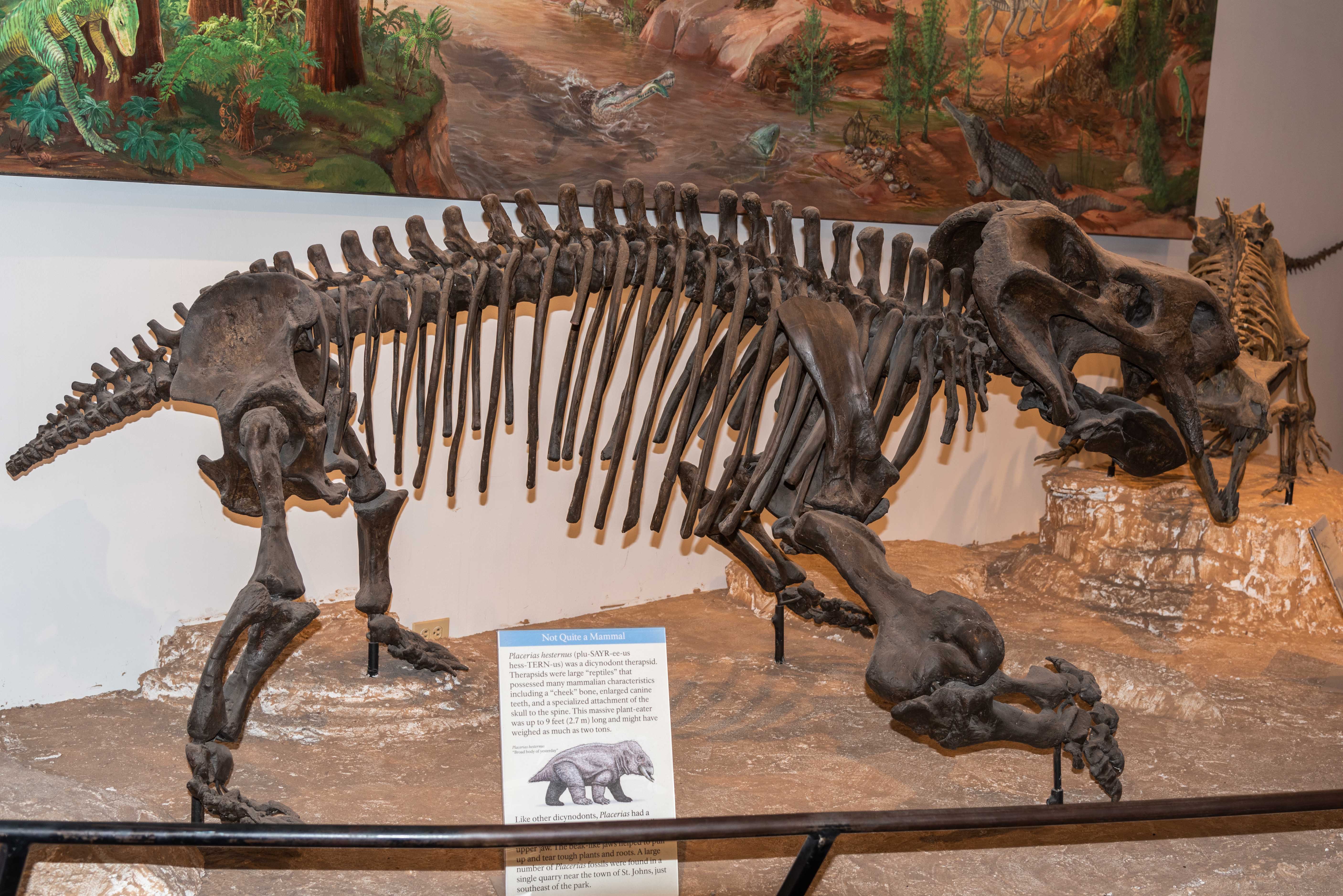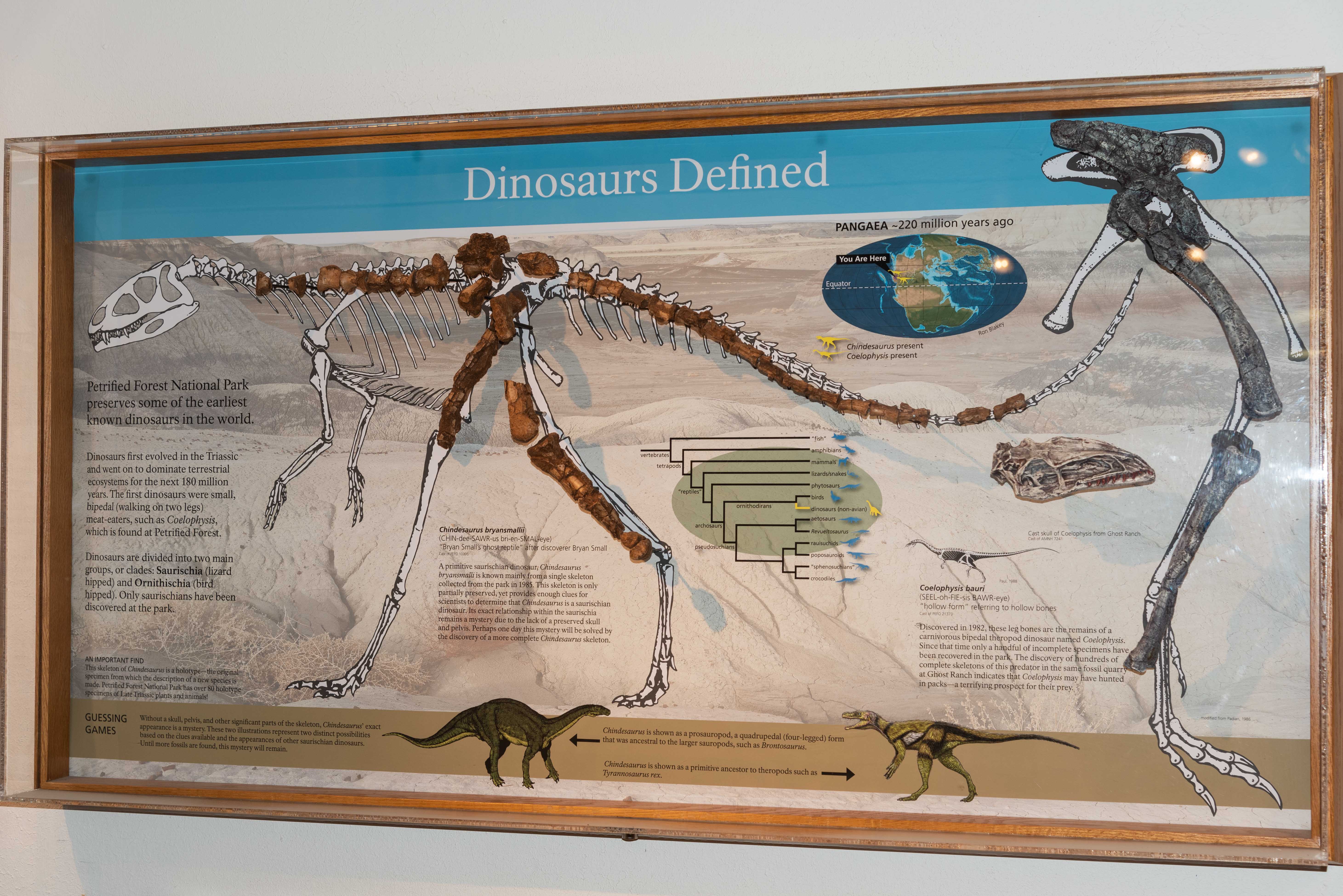Petrified Forest National Park
Petrified Forest National Park was declared a national monument in 1906 and a national park in 1962. It is really two parks in one. In addition to the prehistoric petrified forest which is its namesake, part of the painted desert is included in the northern portion of the park. Also in the Park are the Painted Desert Inn, a National Historic Landmark, and the ancestral puebloan village of Puerco Pueblo. The Park has a north and south entrance. I generally start at the north entrance (exit 311 off Interstate 40) and drive the park road to the south entrance at U.S. Hwy 180. You can stop at the Visitor Center and Painted Desert Inn, loop through the Painted Desert, cross I-40 and historic Route 66, visit Puerco Pueblo just south of the Rio Puerco, travel through the Petrified Forest, and visit the Rainbow Forest Museum on the way out. Tah Dah! I've been to the park five times: 1979, 1989, 2002, and most recently in May of 2022 and April of 2024. As is my custom I've included photos of the same subject taken over multiple visits. This can be a little tedious, but I don't care.
Painted Desert Inn National Historic Landmark
Herbert Lore built the “Stone Tree House”, which became the Painted Desert Inn.
Petrified Forest National Monument purchased the Painted Desert Inn in 1936. The Painted Desert Inn was redesigned in the Pueblo Revival style by NPS architect Lyle Bennett
in the 1930s. Construction and renovation was done by the men of the Civilian Conservation Corps (CCC). The exquisite skylight panels were hand-painted by CCC workers.
The inn reopened on July 4, 1940 and served travelers along Route 66. The inn closed in October 1942 with the advent of World War II, reopening five years later
under management of the Fred Harvey Company. The Inn was built on a bed of bentonite, which made its foundation unstable. The inn’s structural problems led
to its closure in 1963 and much debate over demolition versus preservation. The park initially scheduled demolition of the building for 1975. However, a campaign to save
the Painted Desert Inn resulted in its listing on the National Register of Historic Places in 1976, and it reopened on a limited basis as the Bicentennial Travel Center.
The Painted Desert Inn gained National Historic Landmark status in 1987. Repair and renovation has continued up to the present day, and the Inn is now operated as a
museum featuring decor and architecture from its heyday in the 50s and 60s. I chanced upon a Jaguar rally (cars not cats) at the Painted Desert Inn in 2002, and
I've included a couple of photos of these beautiful autos.
Painted Desert
The Painted Desert is an area of badlands in the four
corners region. It extends from east of the Grand Canyon southeast into Pertified Forest National
Park. The Painted Desert is composed of various eroded rock layers from the Triassic Period.
These layers are rich in iron and manganese that color the badlands in shades of red, brown, and lavender.
Petrified Forest
The park south of Interstate 40 is known as the Petrified Forest.
The Petrified Forest is a large area of fossilized trees from the late Triassic Period. Other fossil plants including ferns and ginkos are found here.
Prehistoric fauna such as phytosaurs are also present. Stops along the way include Puerco Pueblo, Newspaper Rock,
The Tepees, Blue Mesa, Agate Bridge, Jasper Forest, Crystal Forest, Long Logs/Agate House, and the Rainbow Forest Area.
Short, easy hiking trails are located at Blue Mesa, Crystal Forest, and Agate House.
Puerco Pueblo
Puerco Pueblo is a late (Pueblo IV) ancestral puebloan village of
about 100 rooms. It probably had 200 residents at its peak around 1300 A.D. By 1380 it was deserted. Who knows why? There are some
interesting petroglyphs at Puerco Pueblo, as well as a restored 1935 entrance station/visitor center.
Blue Mesa
A 3.5 mile loop drive features vistas
of Blue Mesa. The badlands of Blue Mesa are colored blue, gray, and white. A one mile loop trail, steep
at the beginning, winds through the badlands.
Crystal Forest
Crystal Forest is a prehistoric forest
that is currently composed of dozens, if not hundreds, of petrified logs. Many of the logs are still intact.
The Crystal Forest Trail is a 0.8 mile loop trail that meanders through this peterified forest.
Long Logs and Agate House
Long Logs is an area of
especially long petrified tree trunks and Agate House is a reconstructed pueblo made of blocks of petrified
wood. The trail to Long Logs is a 1.6 mile loop, and the trail to Agate House is 2 miles out and back. Both
trails are accessed from the same trailhead. I only did the trail to Agate House.
Rainbow Forest Historic District
Construction of the Rainbow Forest Complex was started in 1928. It served as park headquarters
for 39 years. The complex consists of a visitor center and museum, concession building and gift shop,
and residential and service areas for park staff. It is also the site of Rainbow Forest, an area containing
the largest and most colorful petrified wood in the park. The paleontological
displays in the museum are pretty interesting.
Thanks to the National Park Service and Wikipedia for background content.
Use the form on the Home Page to submit comments, questions, or suggestions. TD Productions Copyright © 2018-2024
